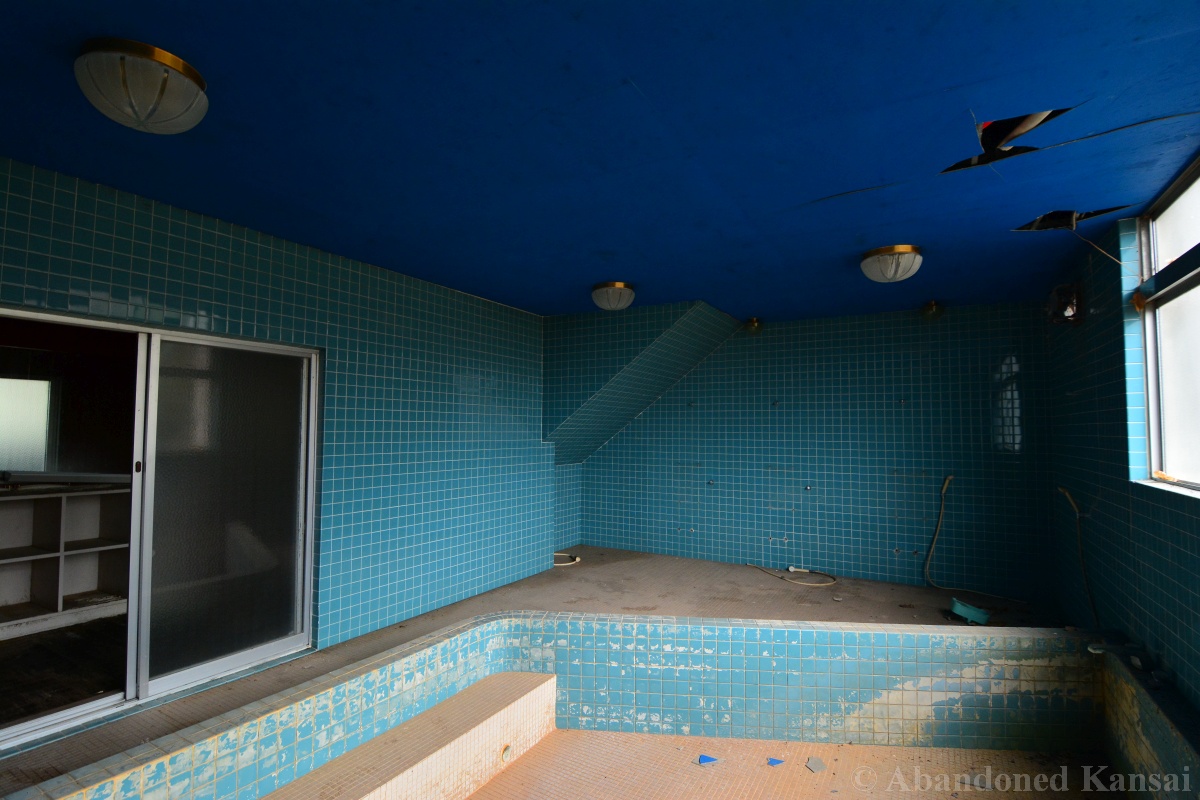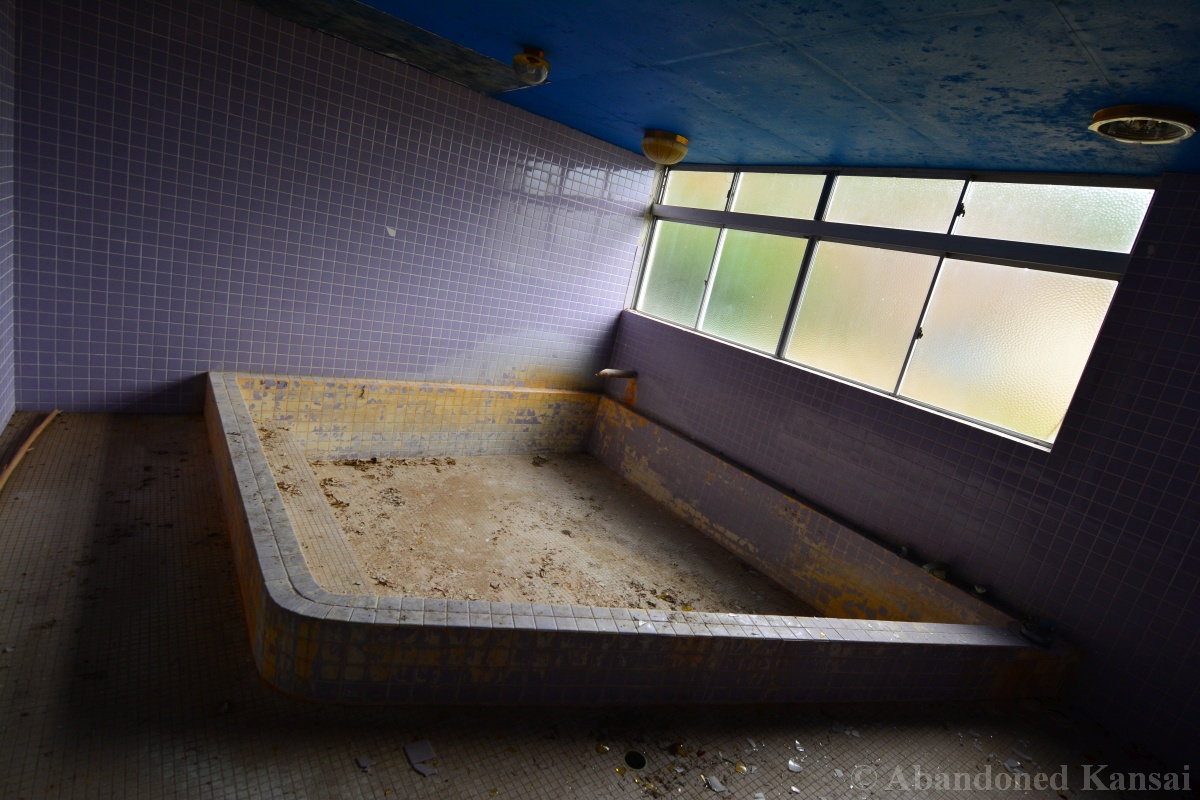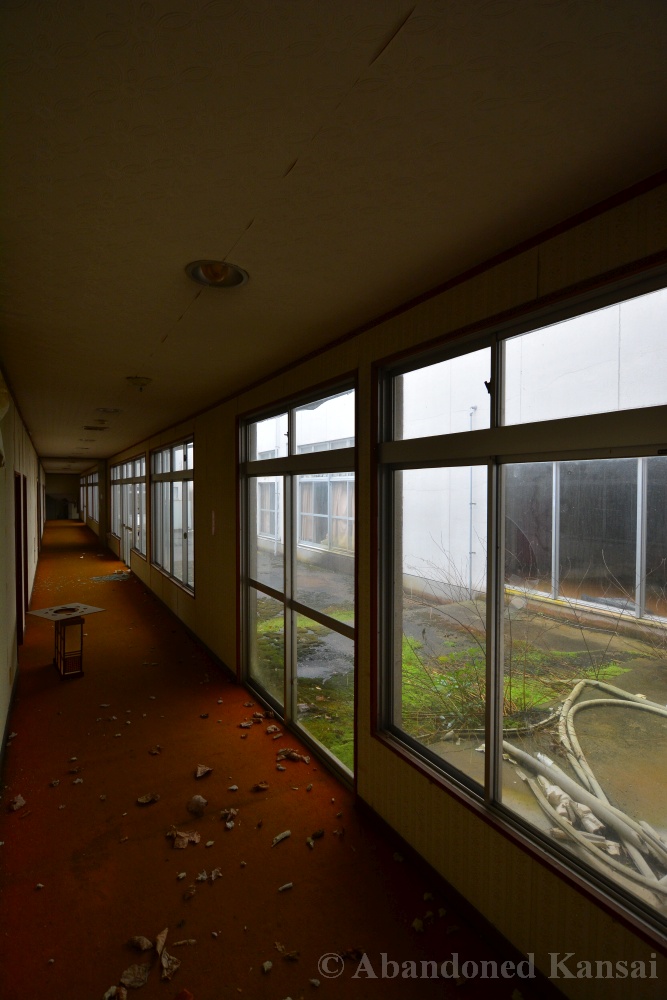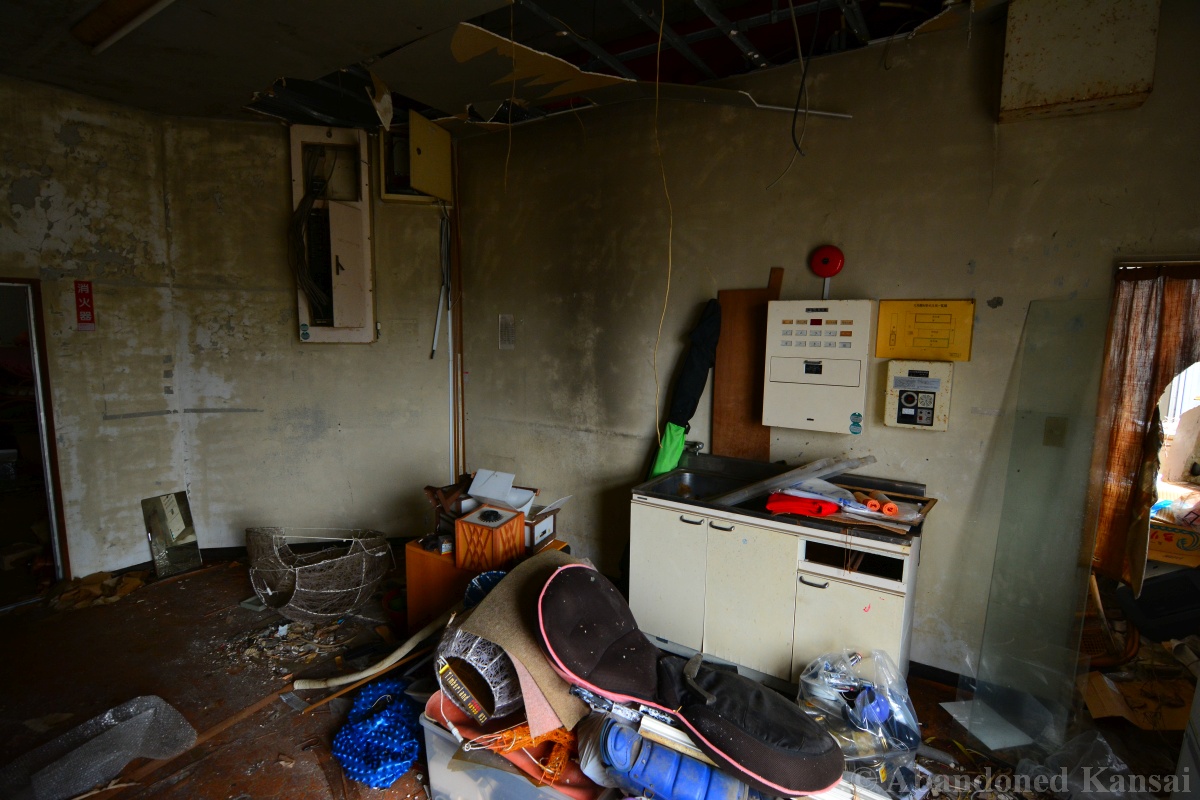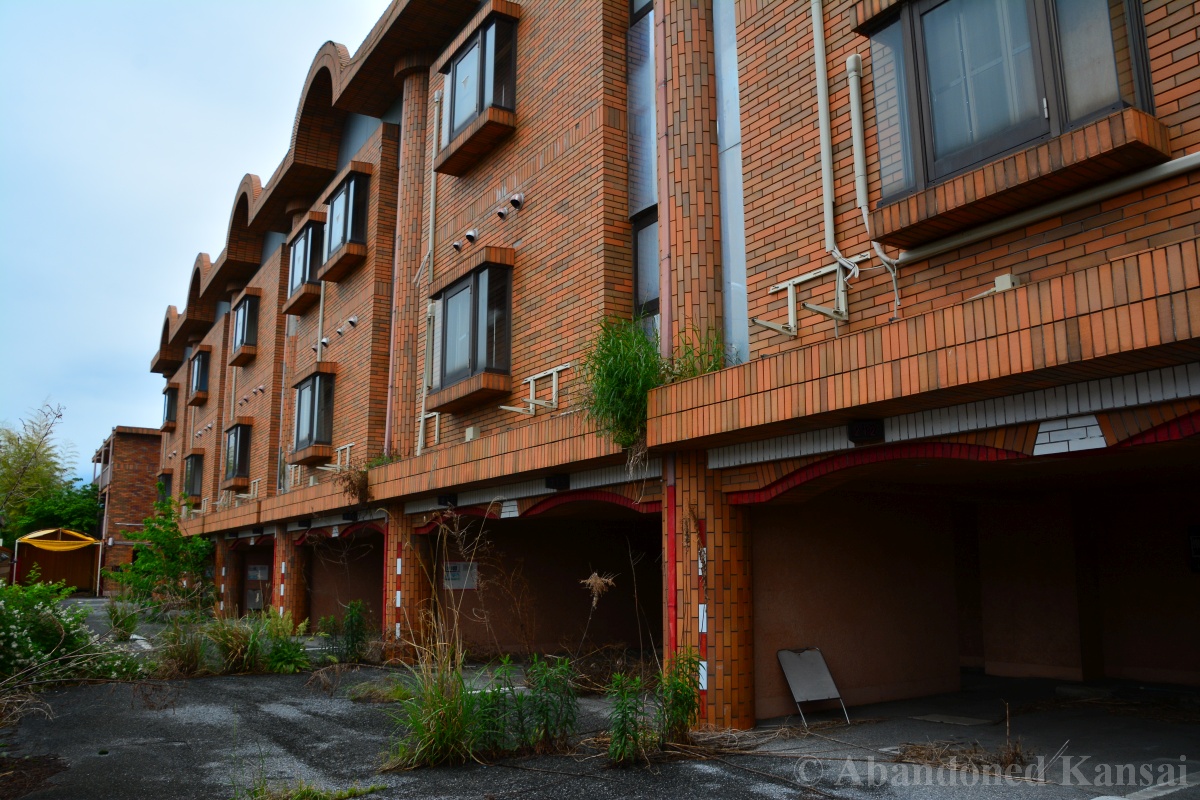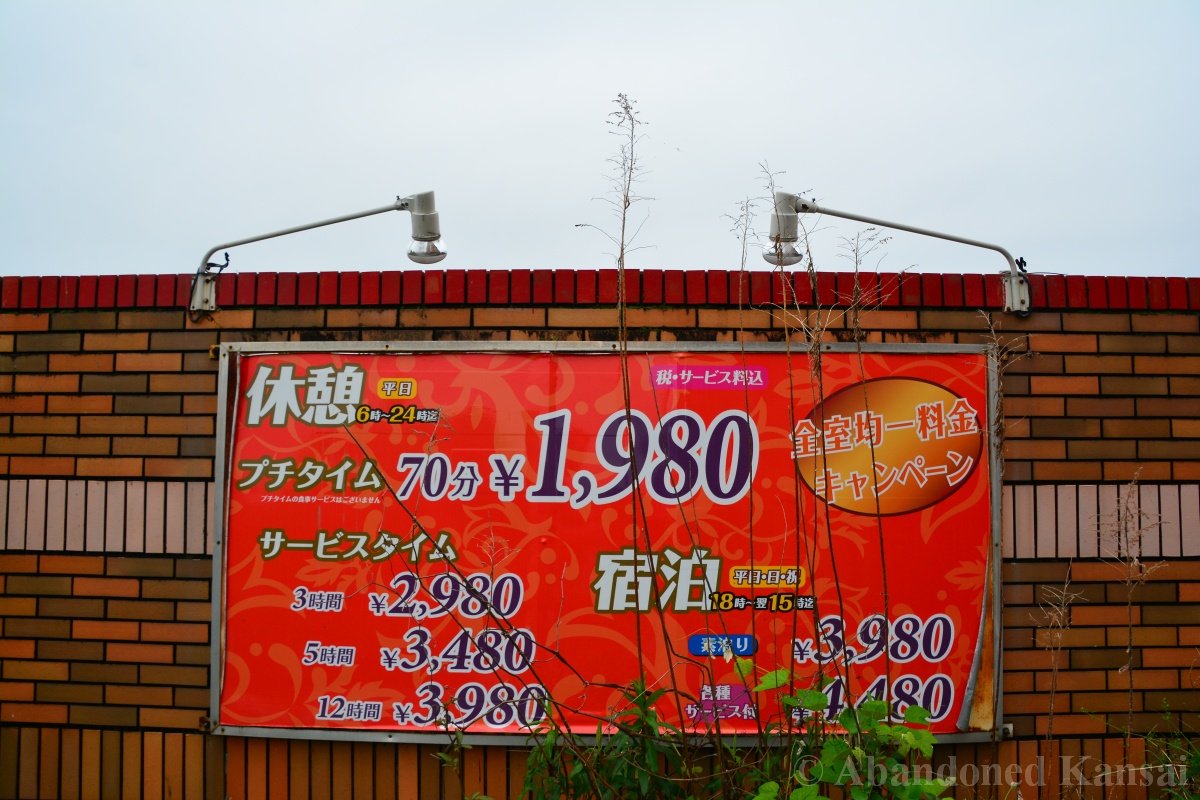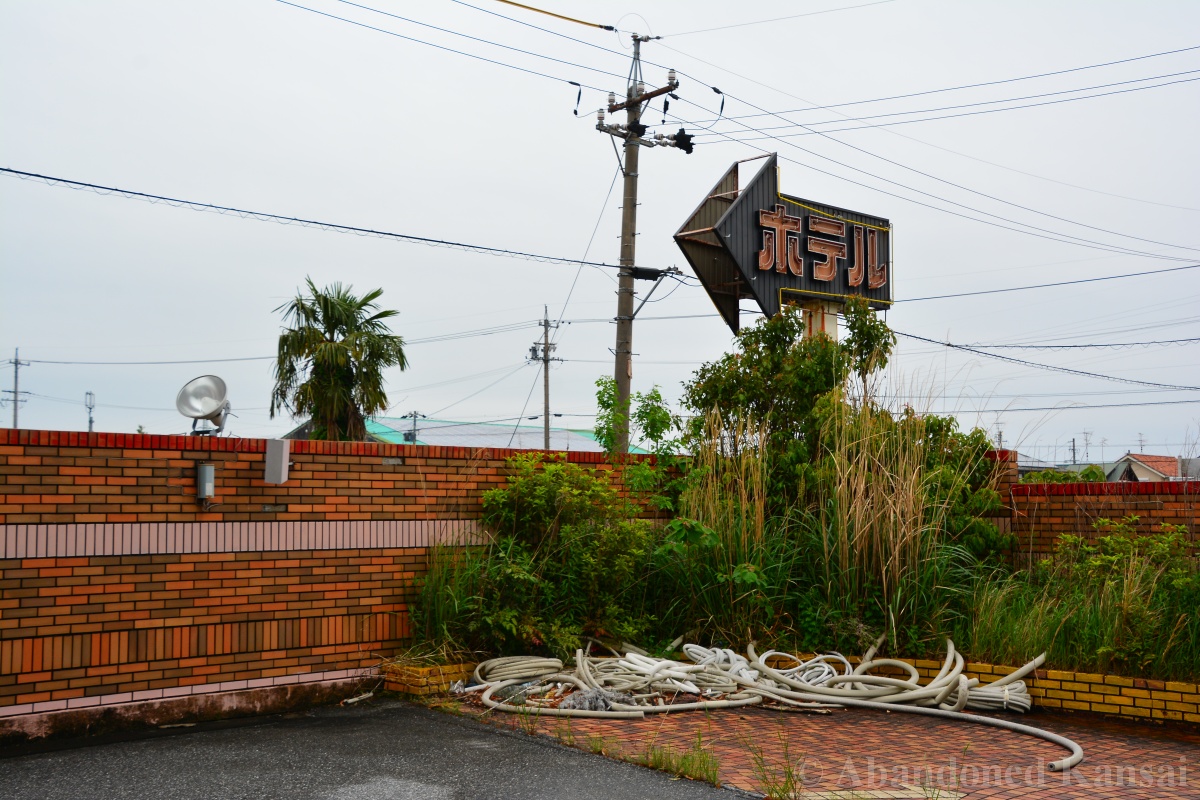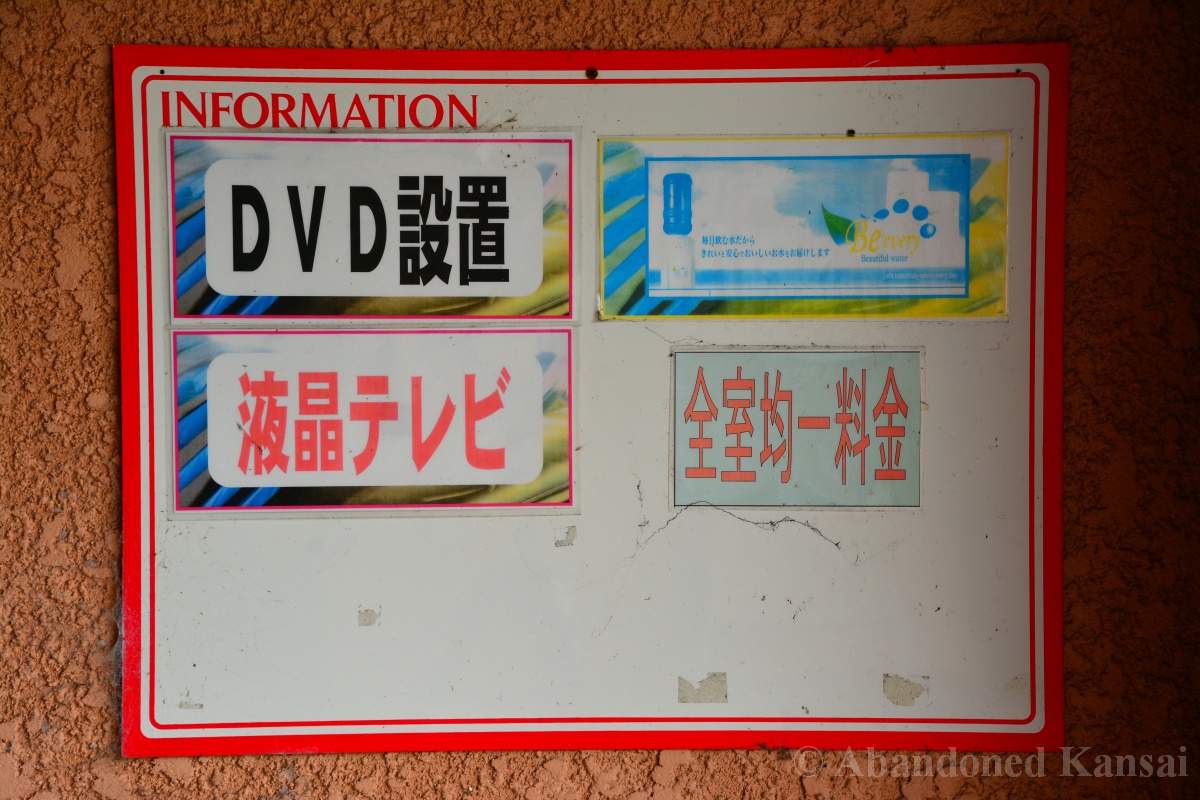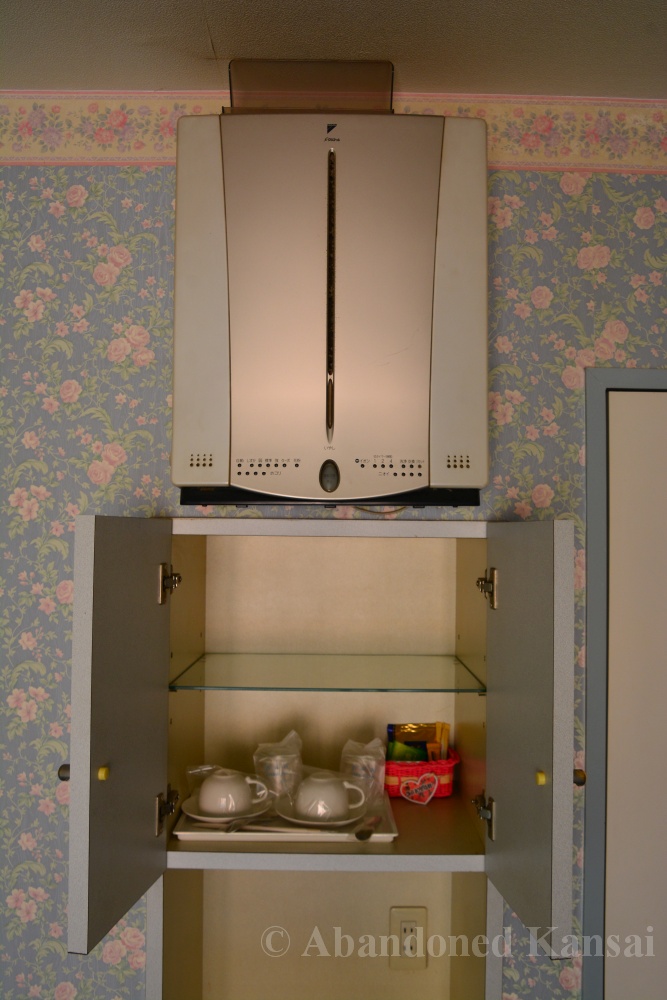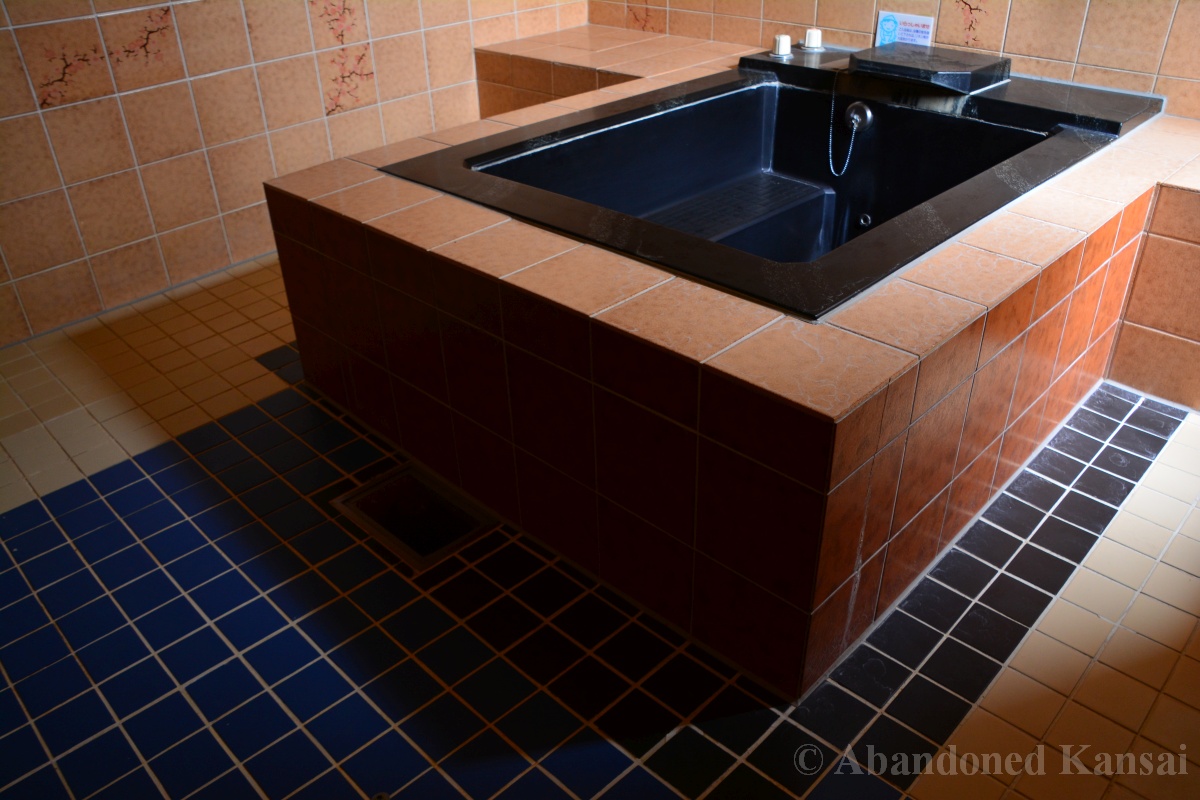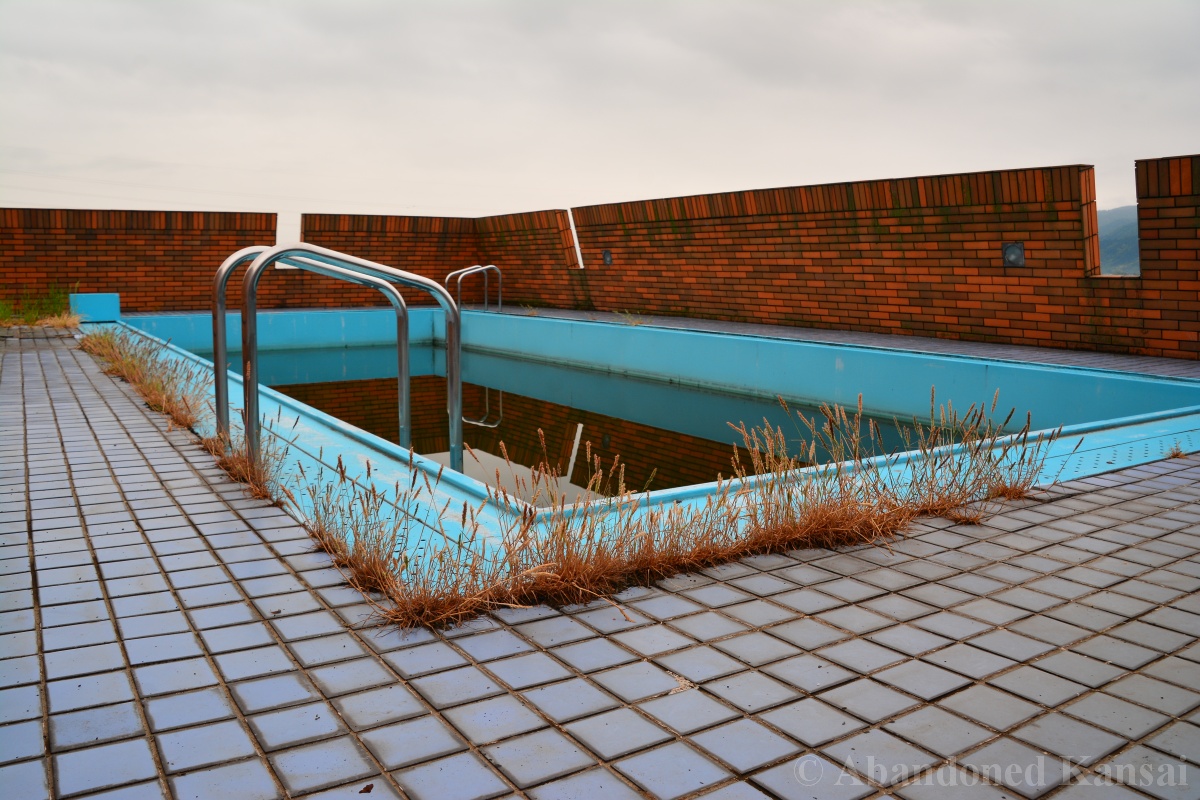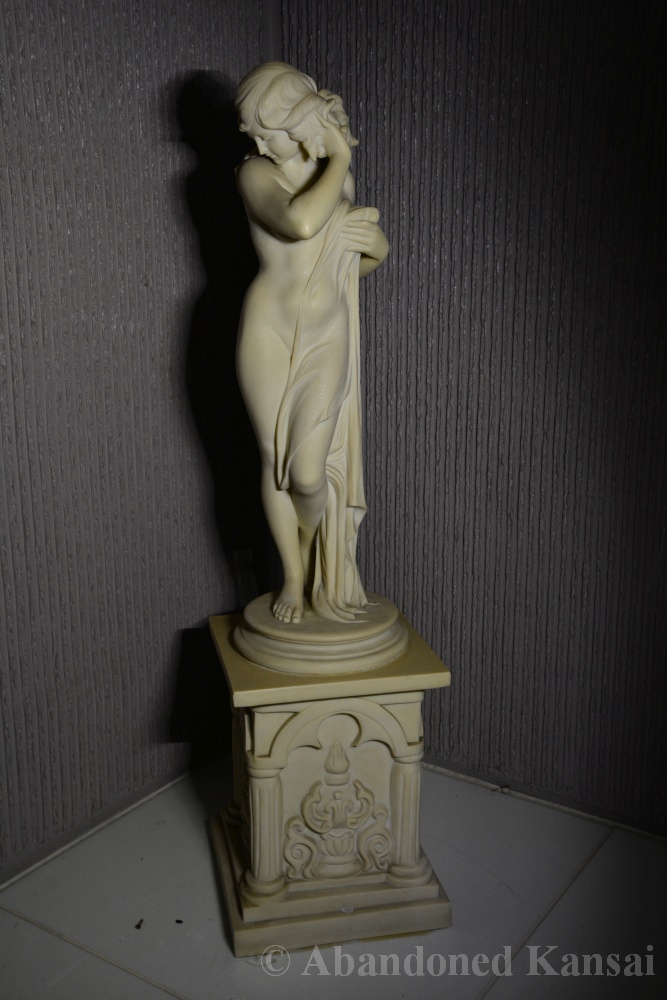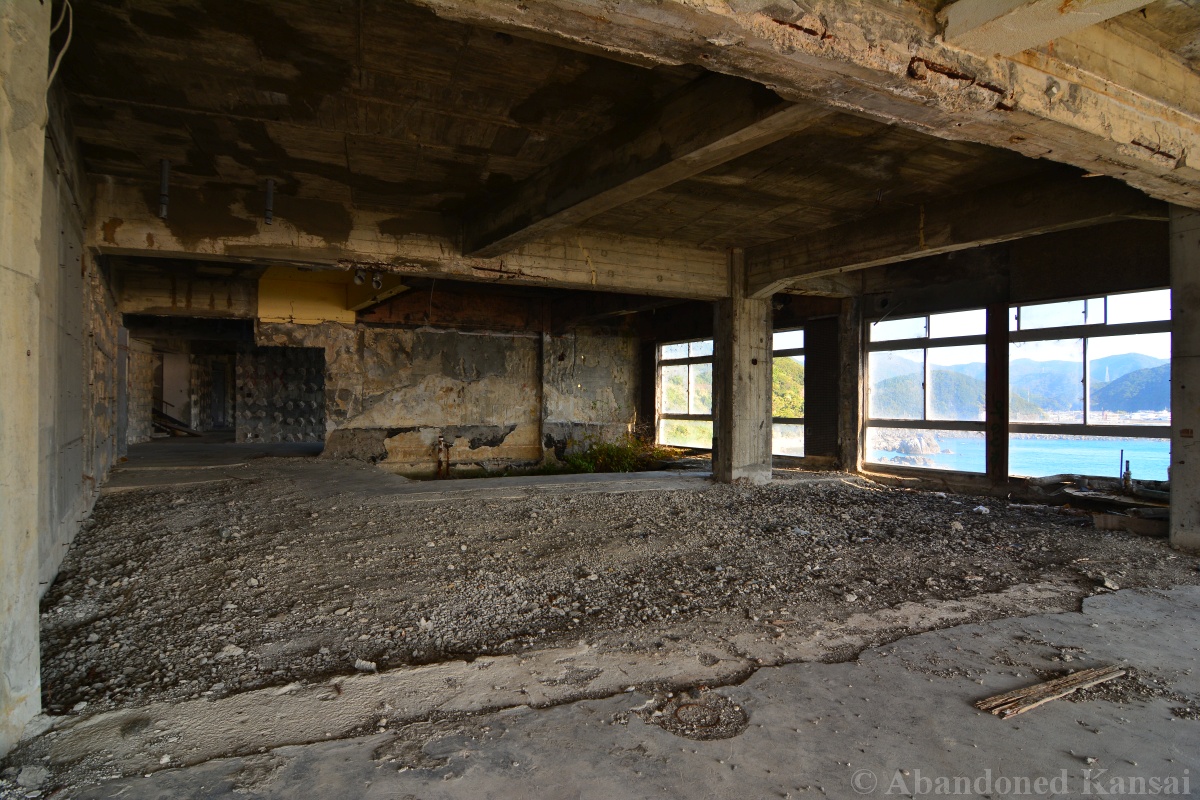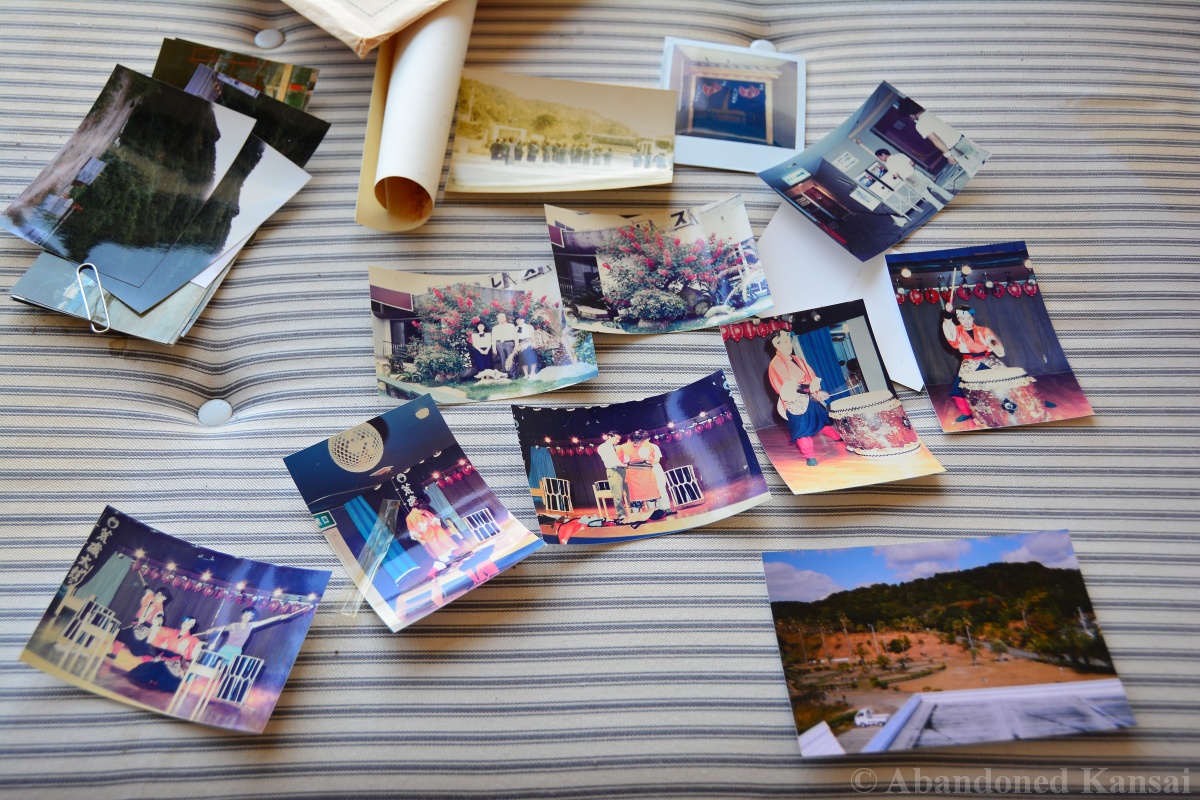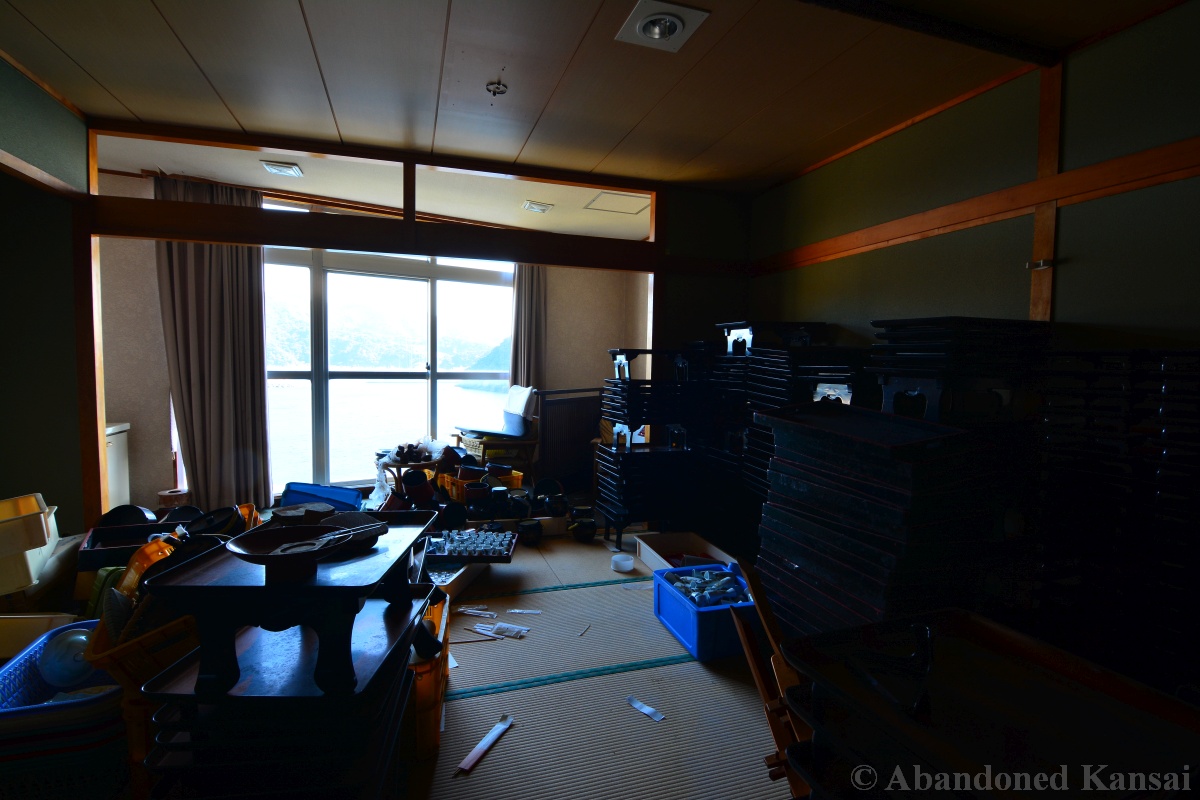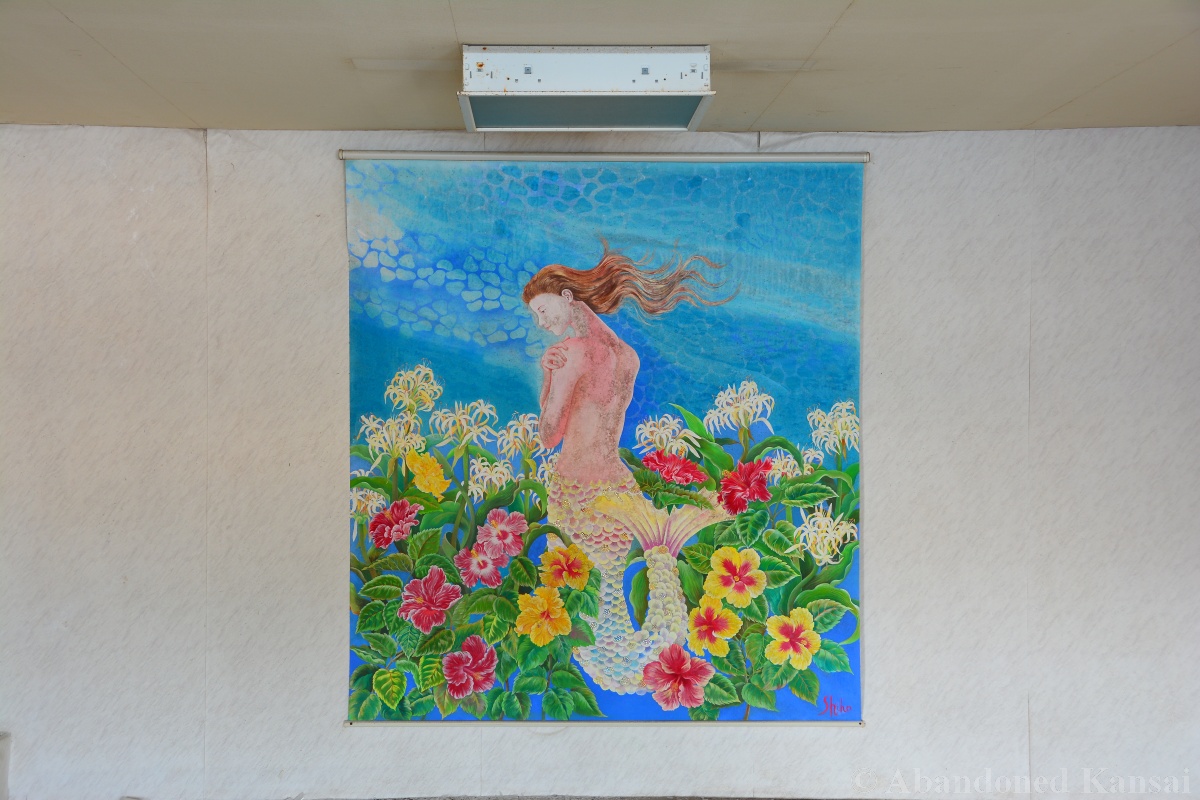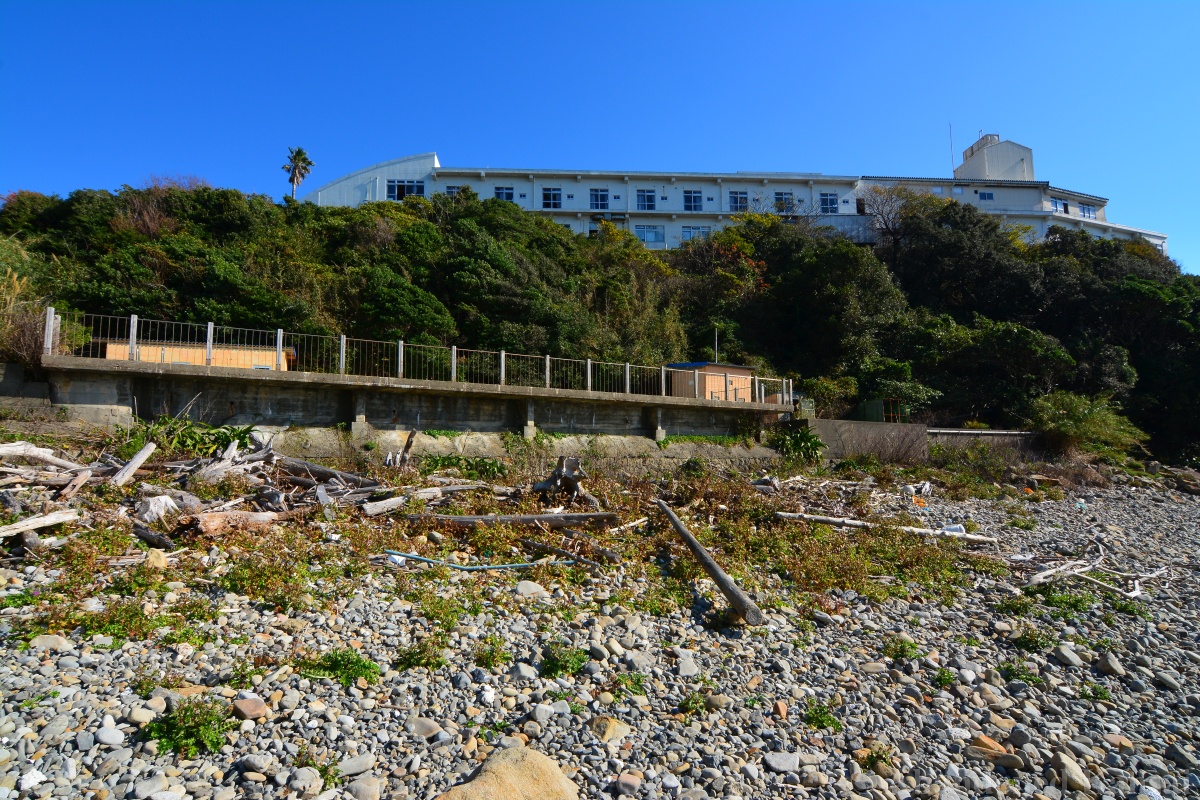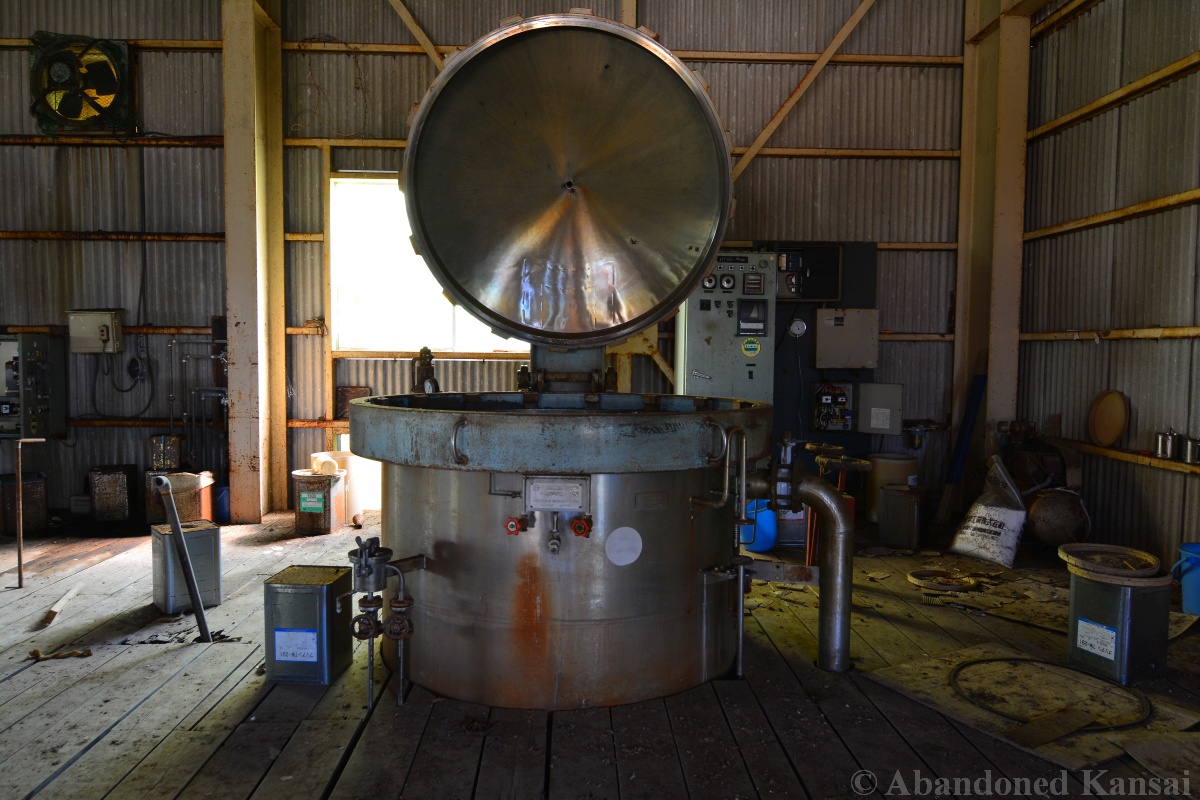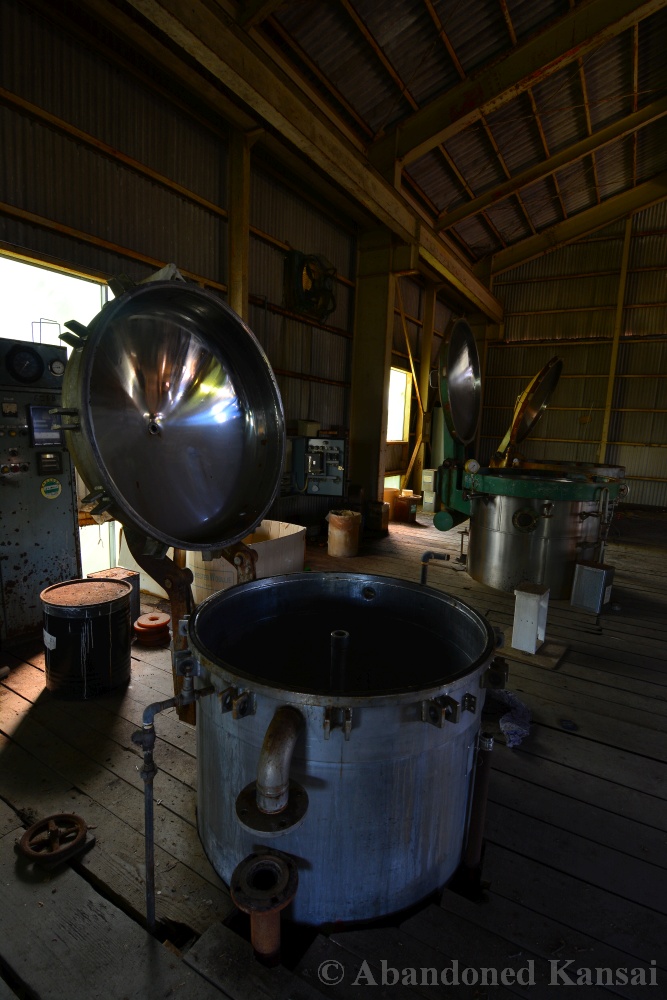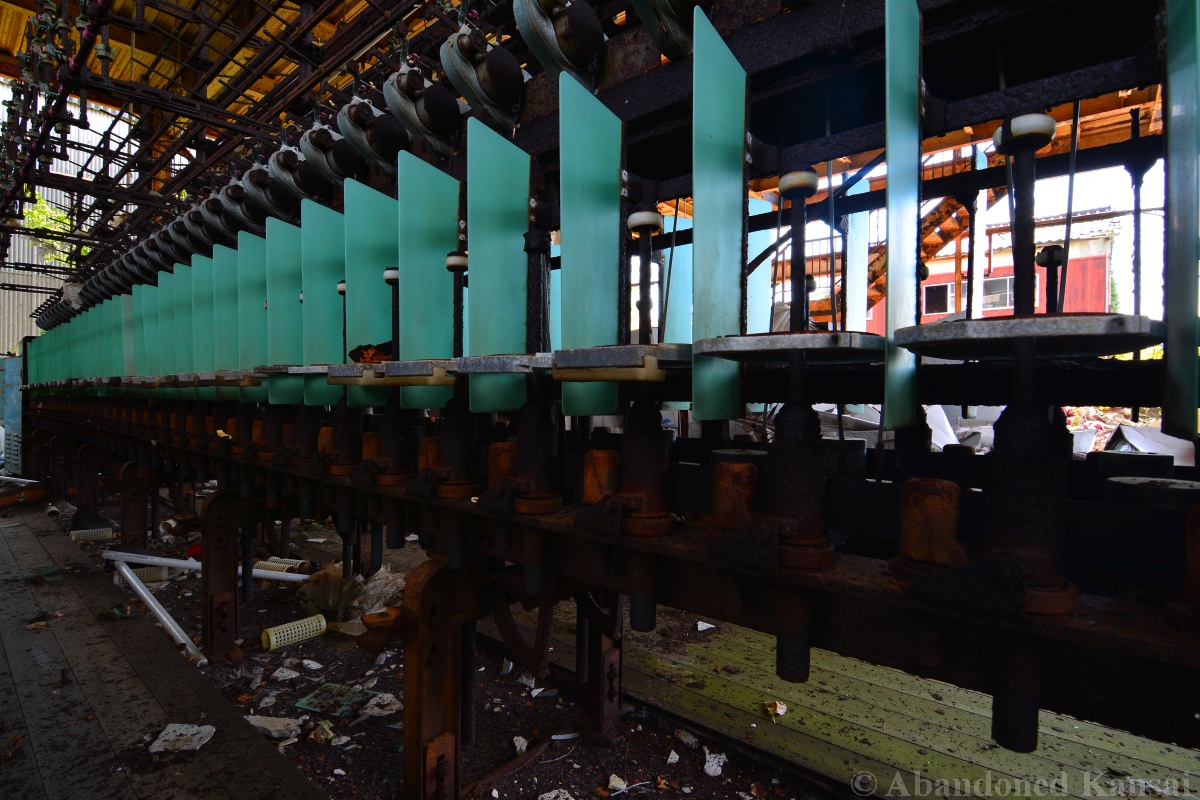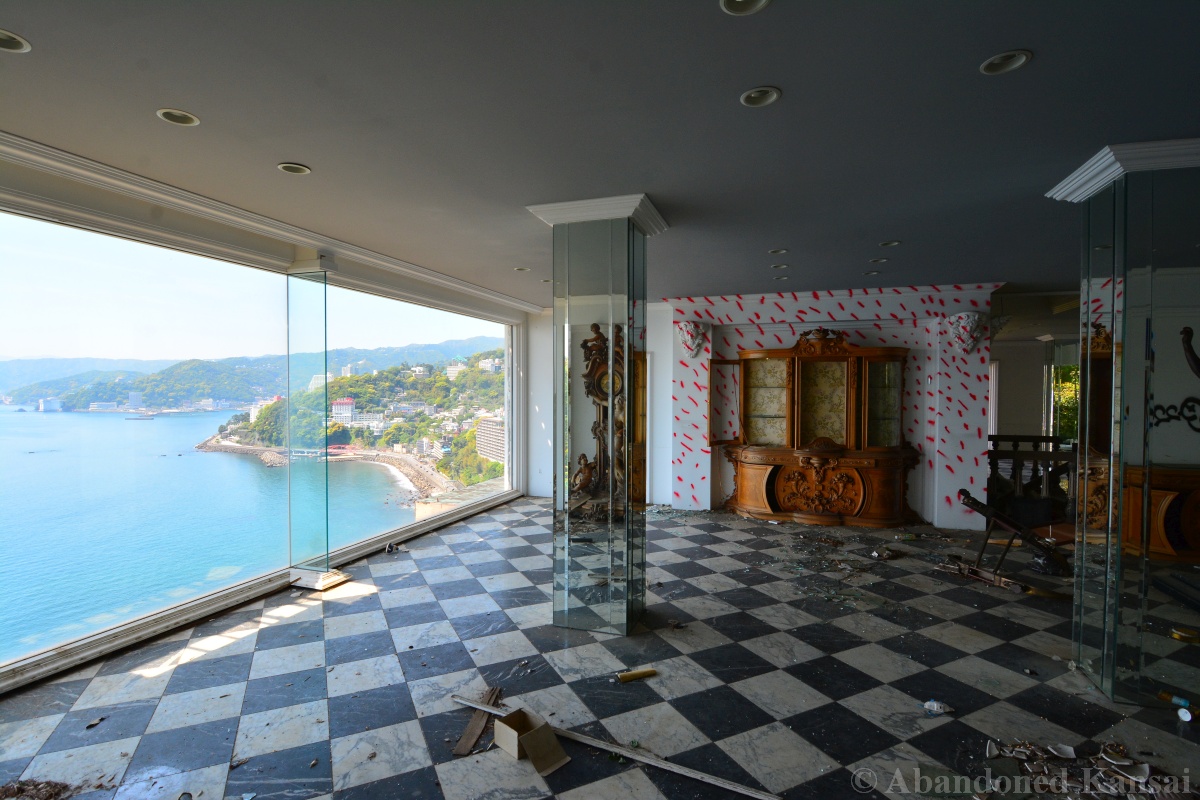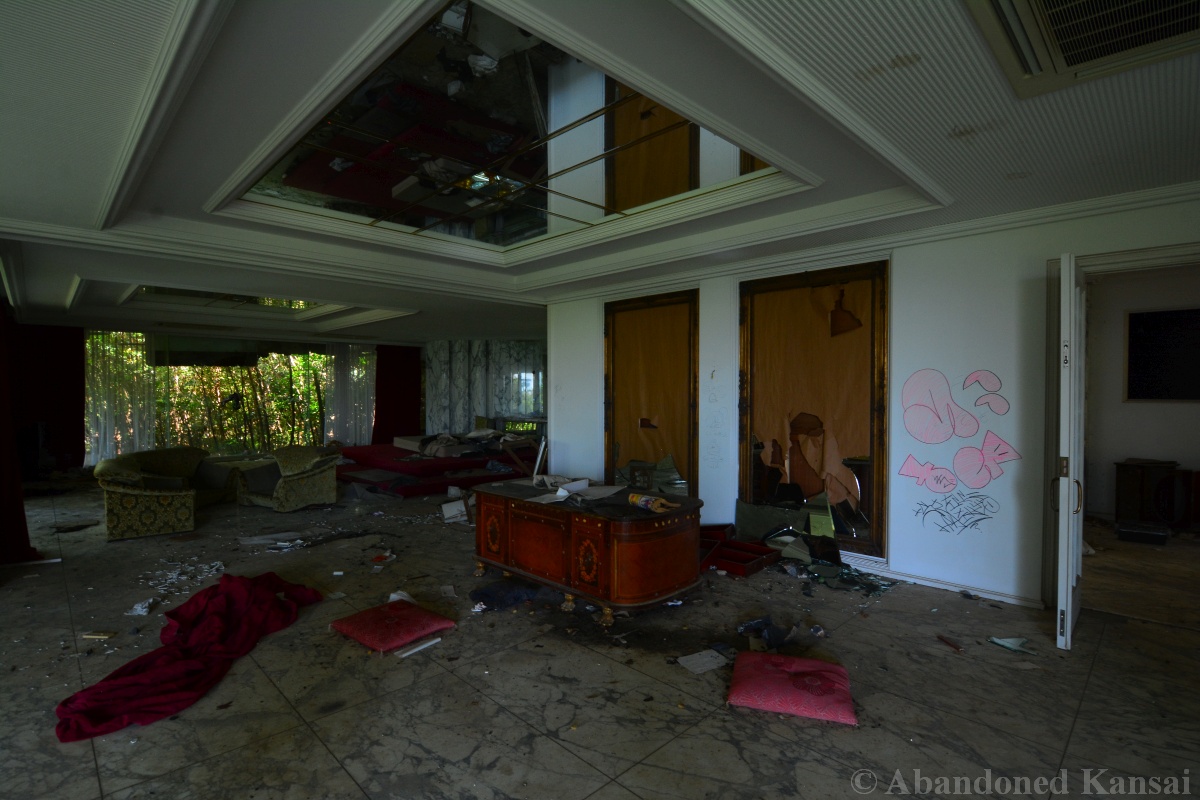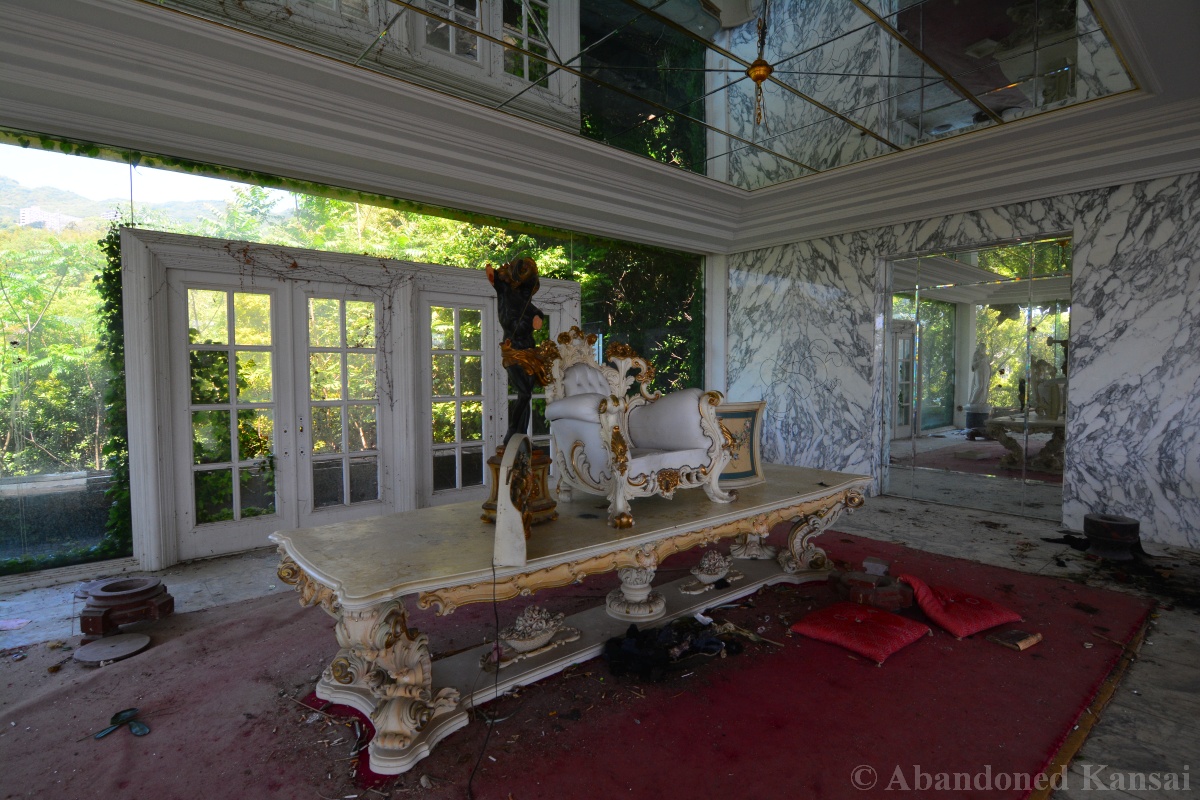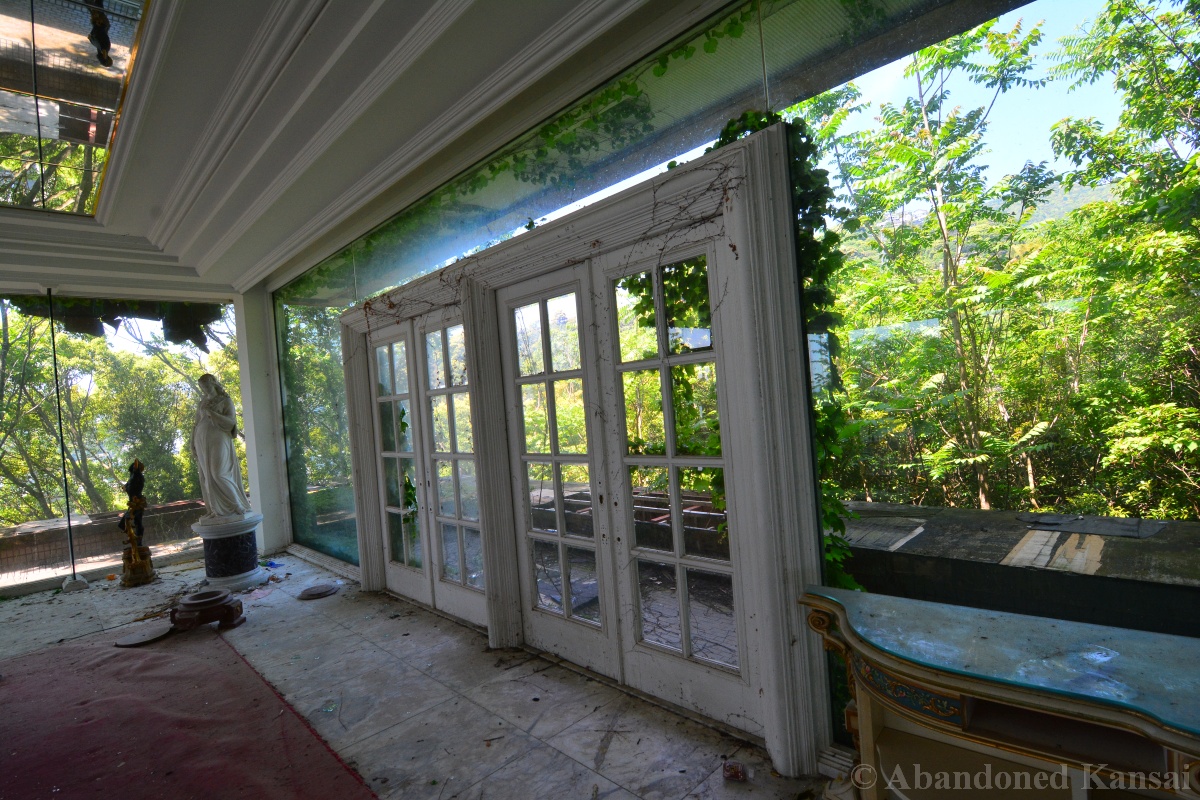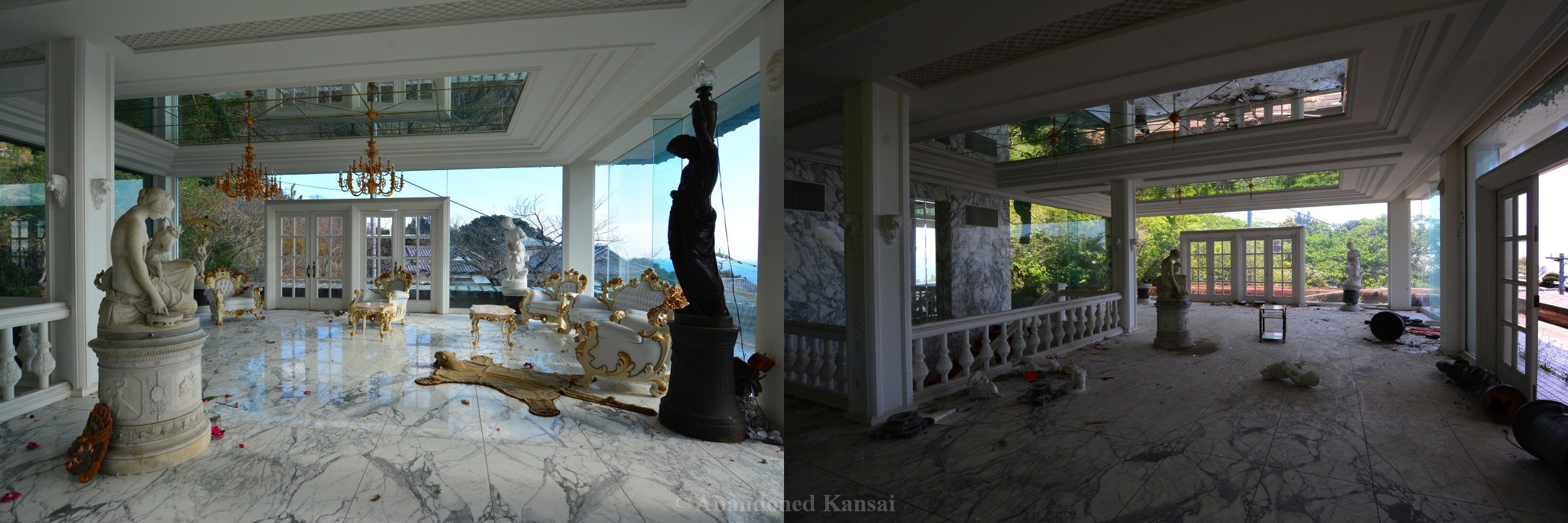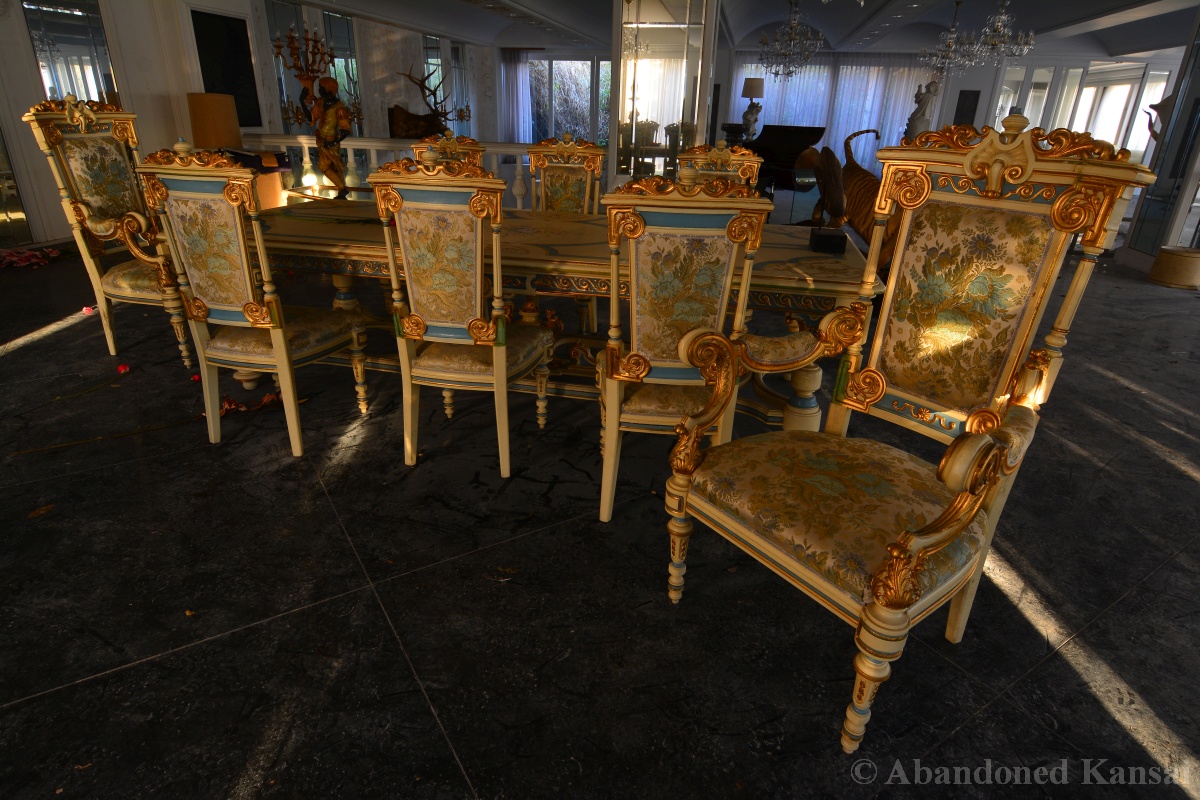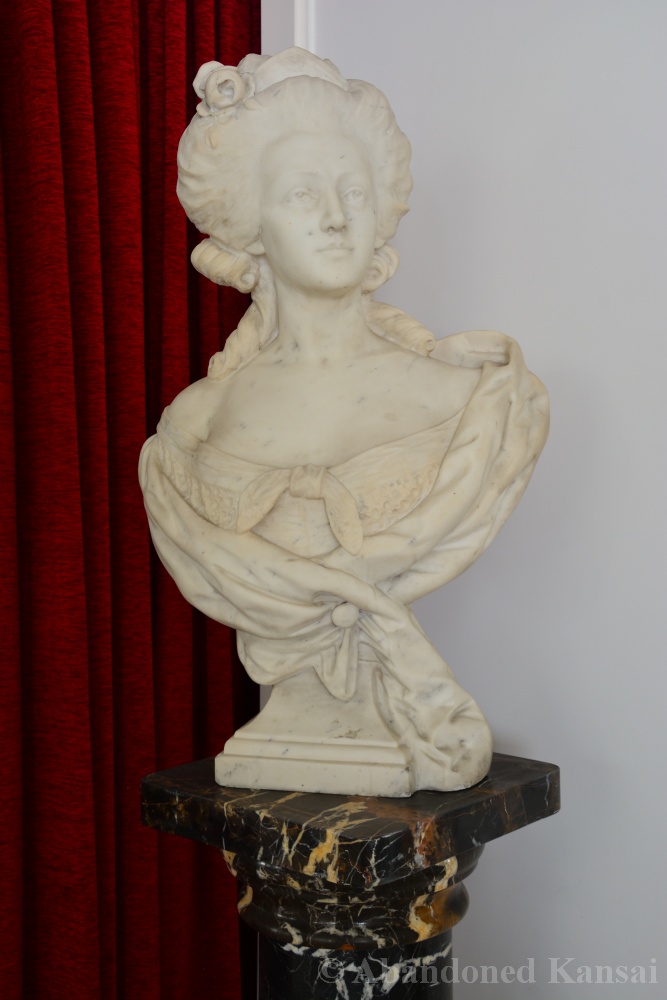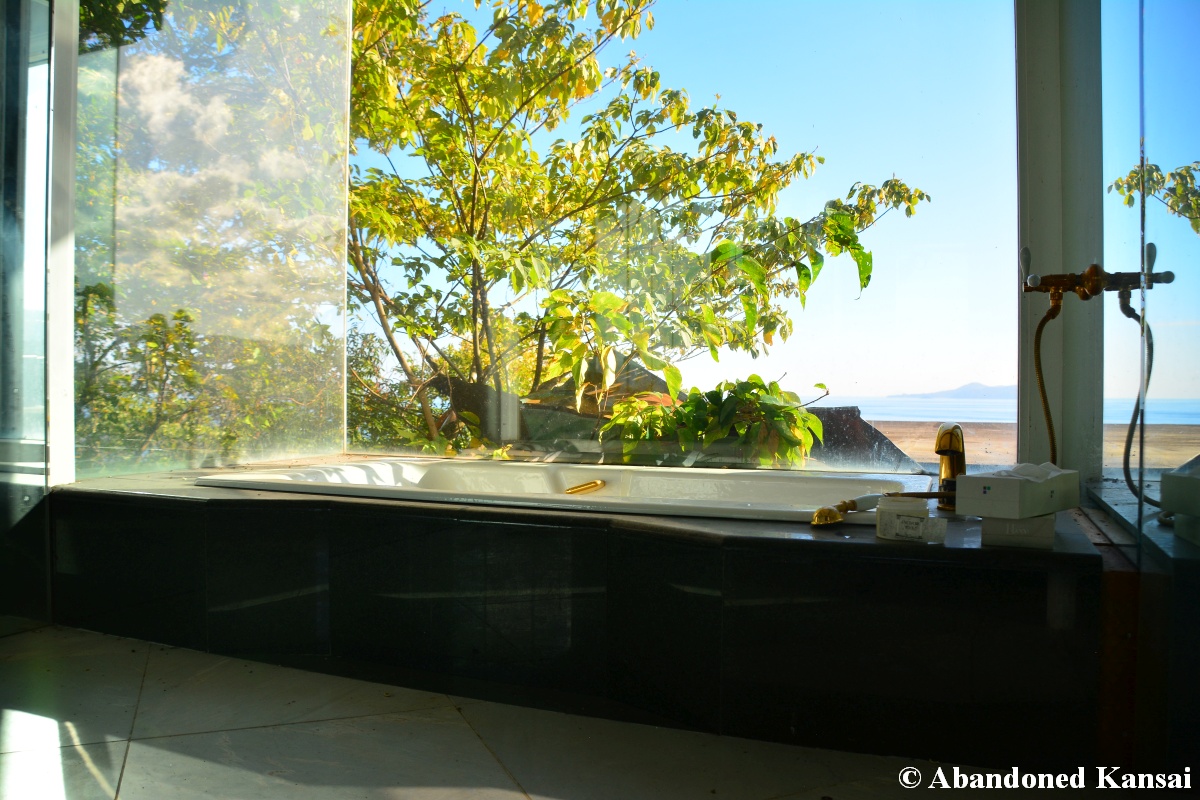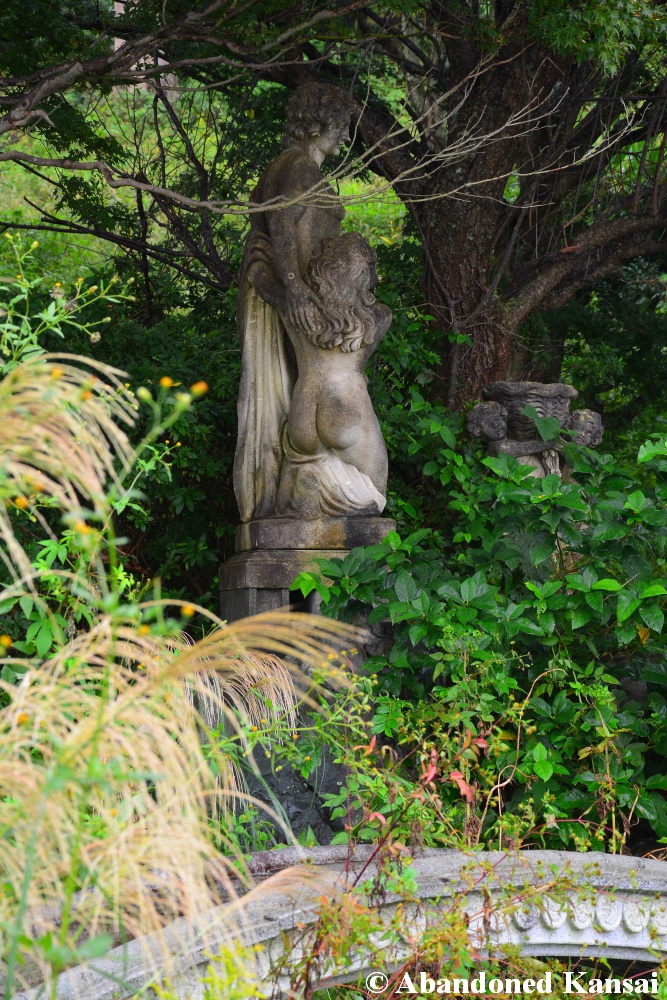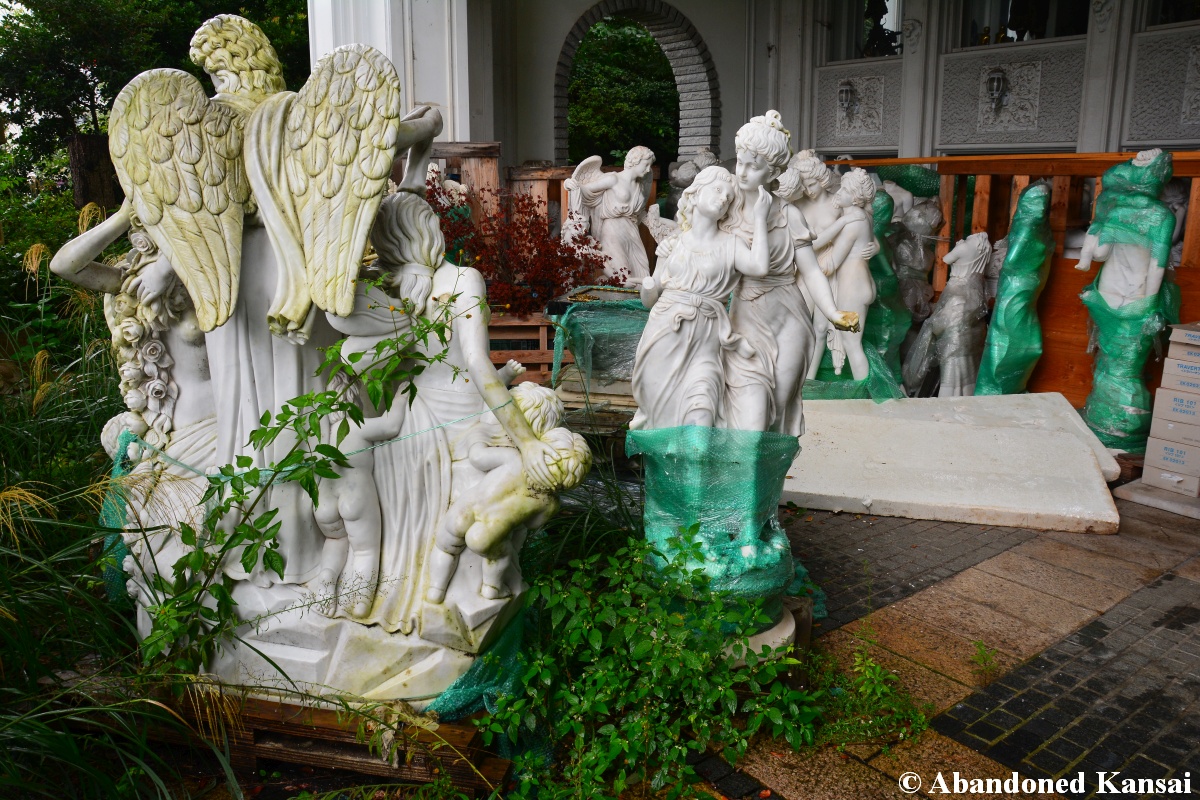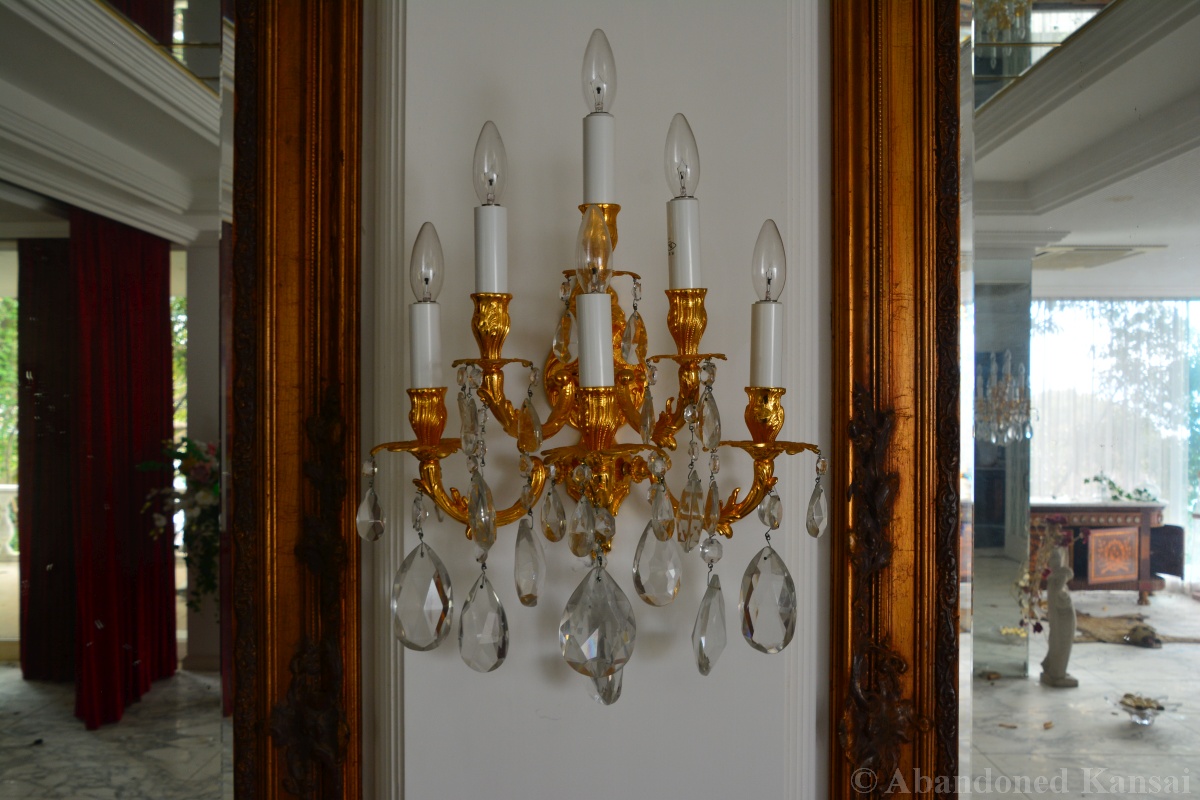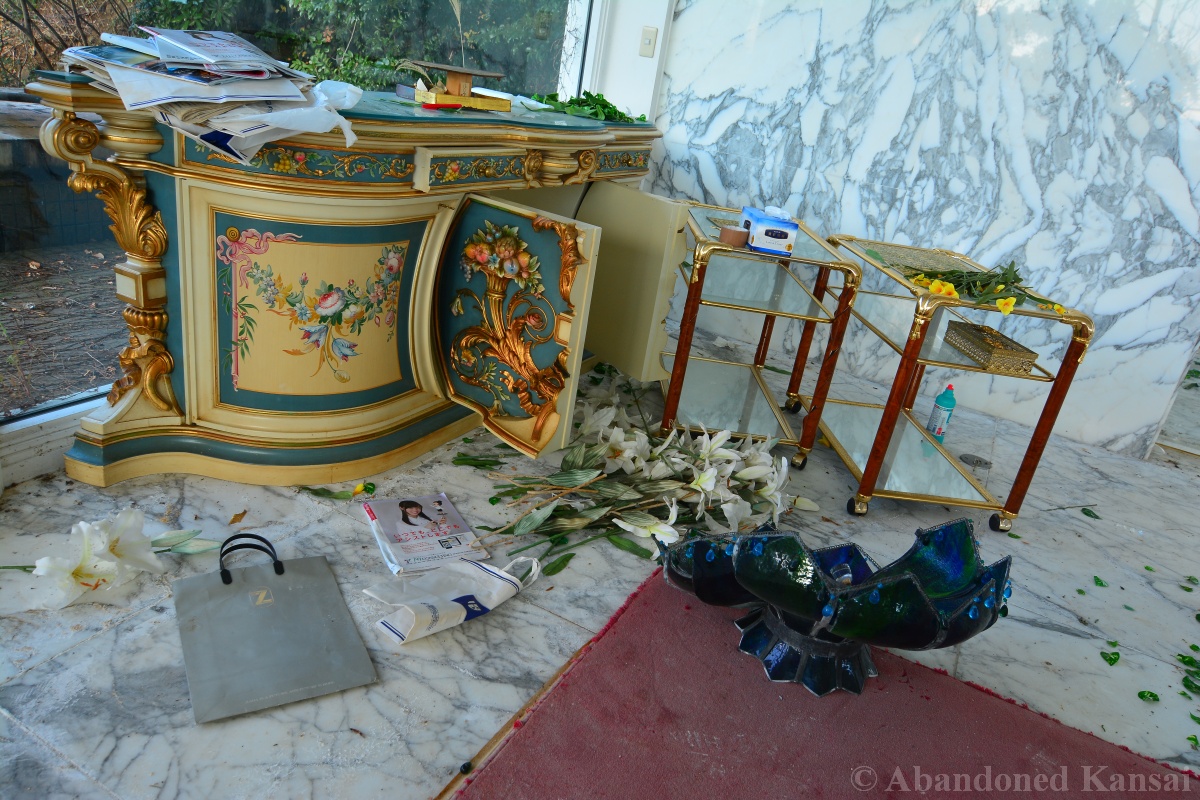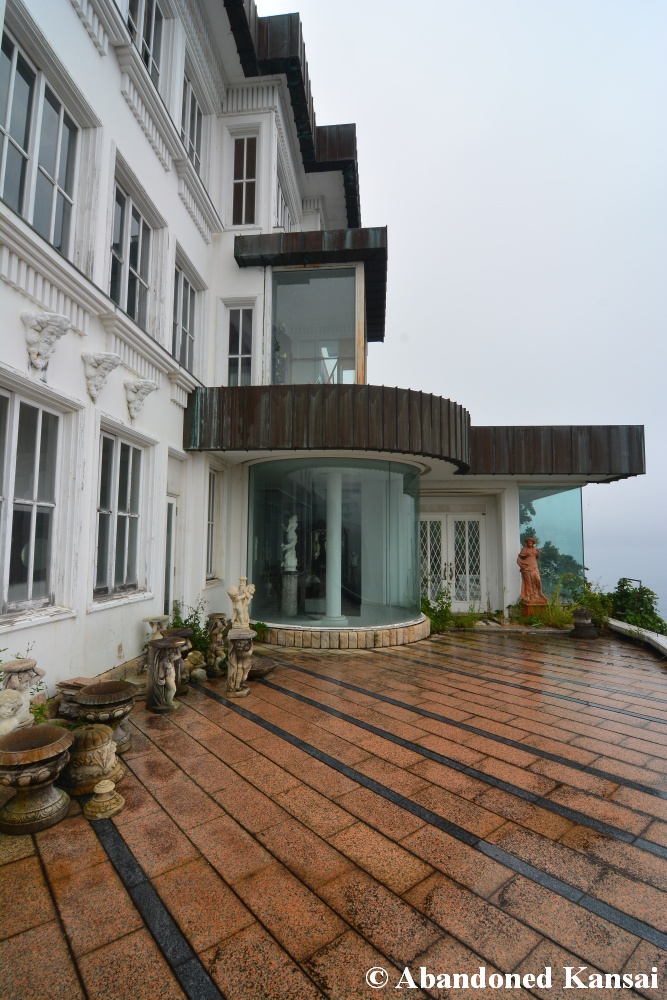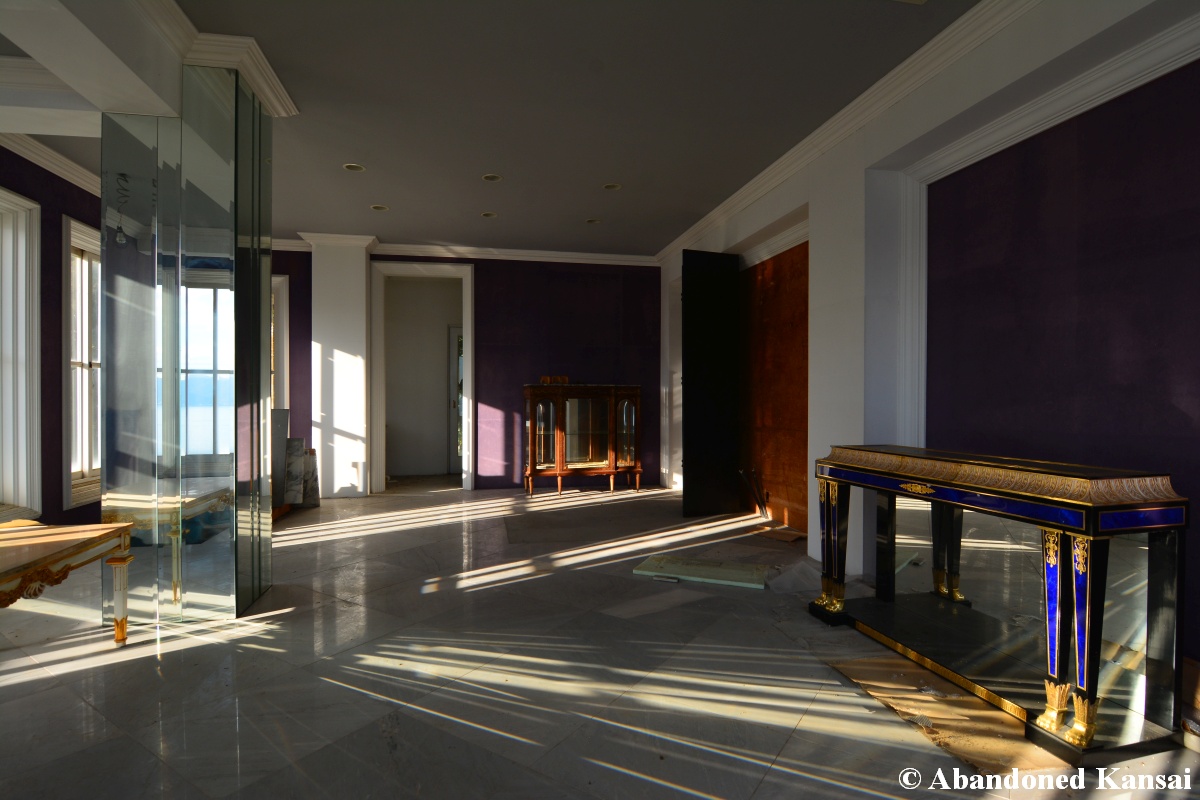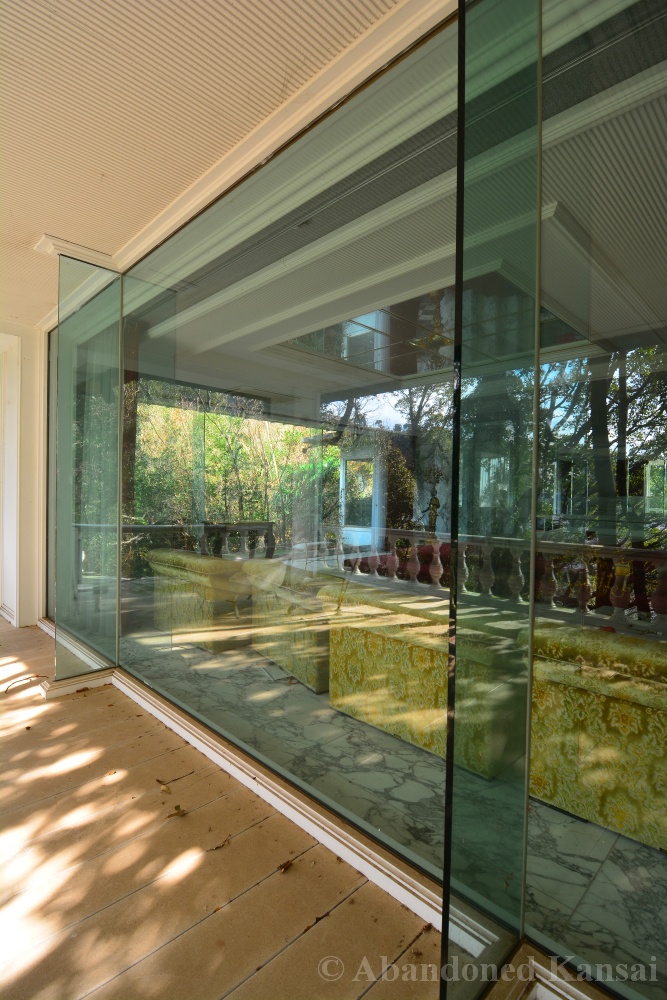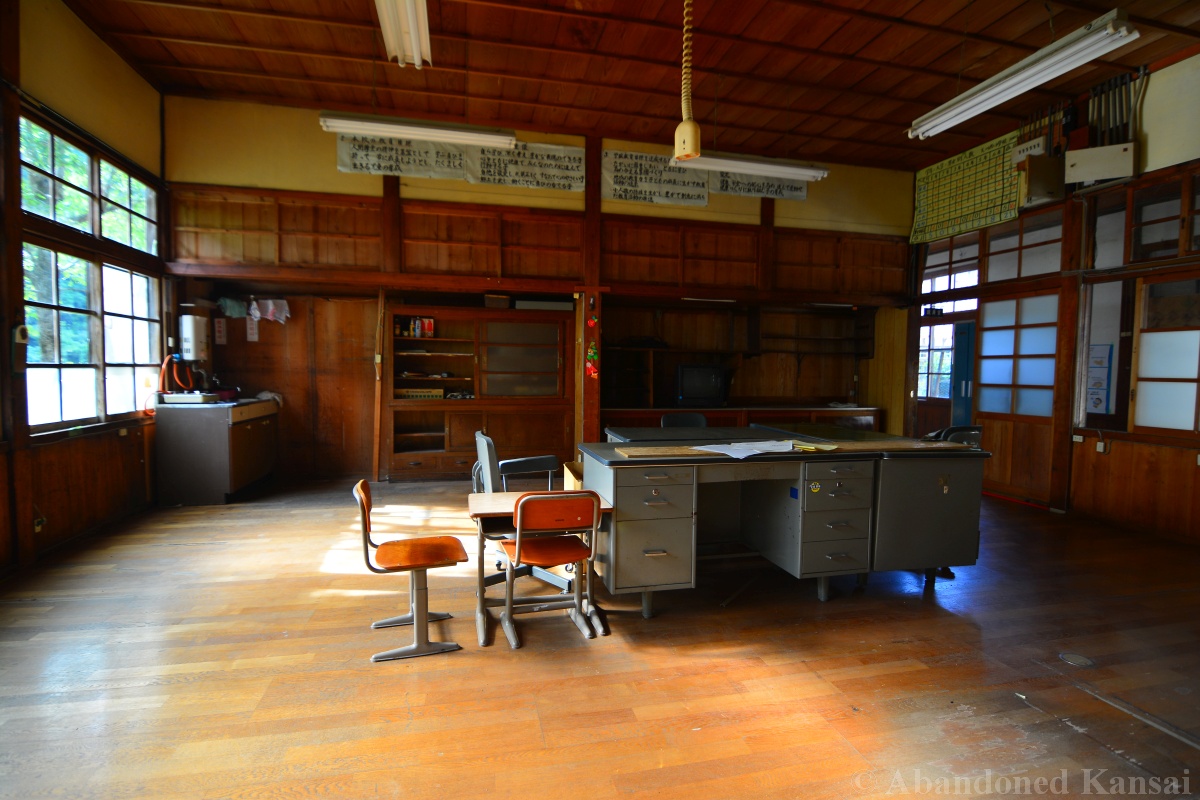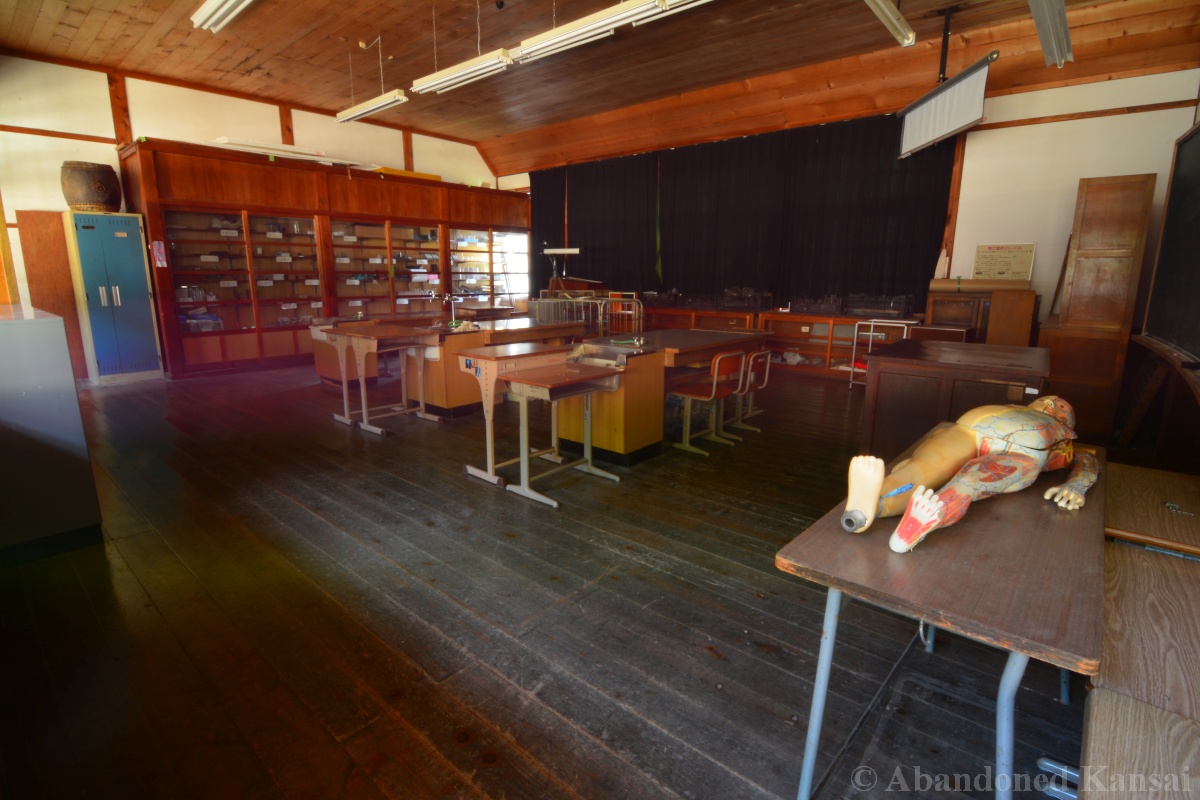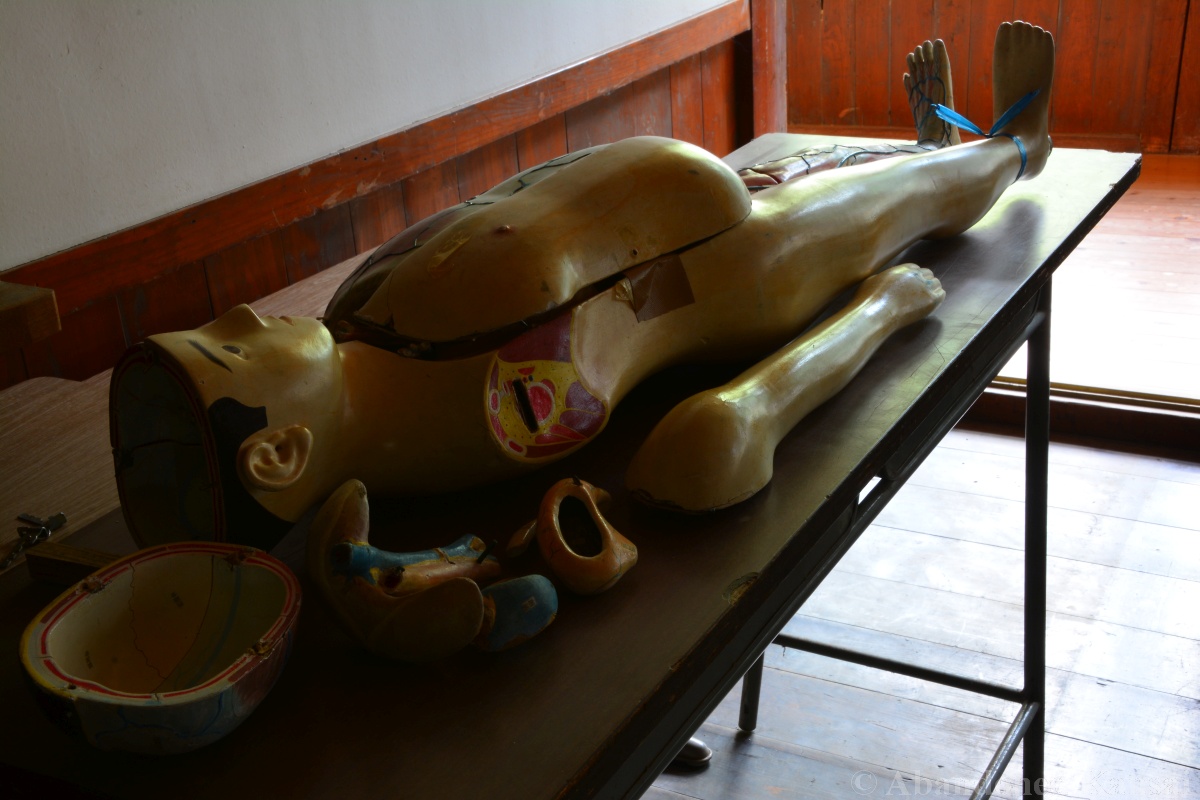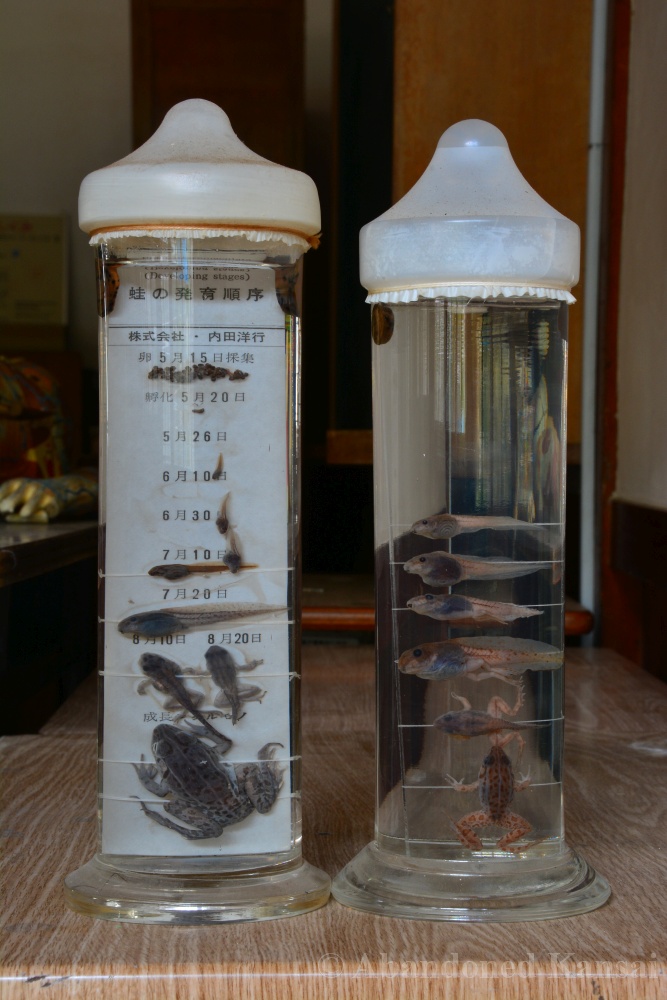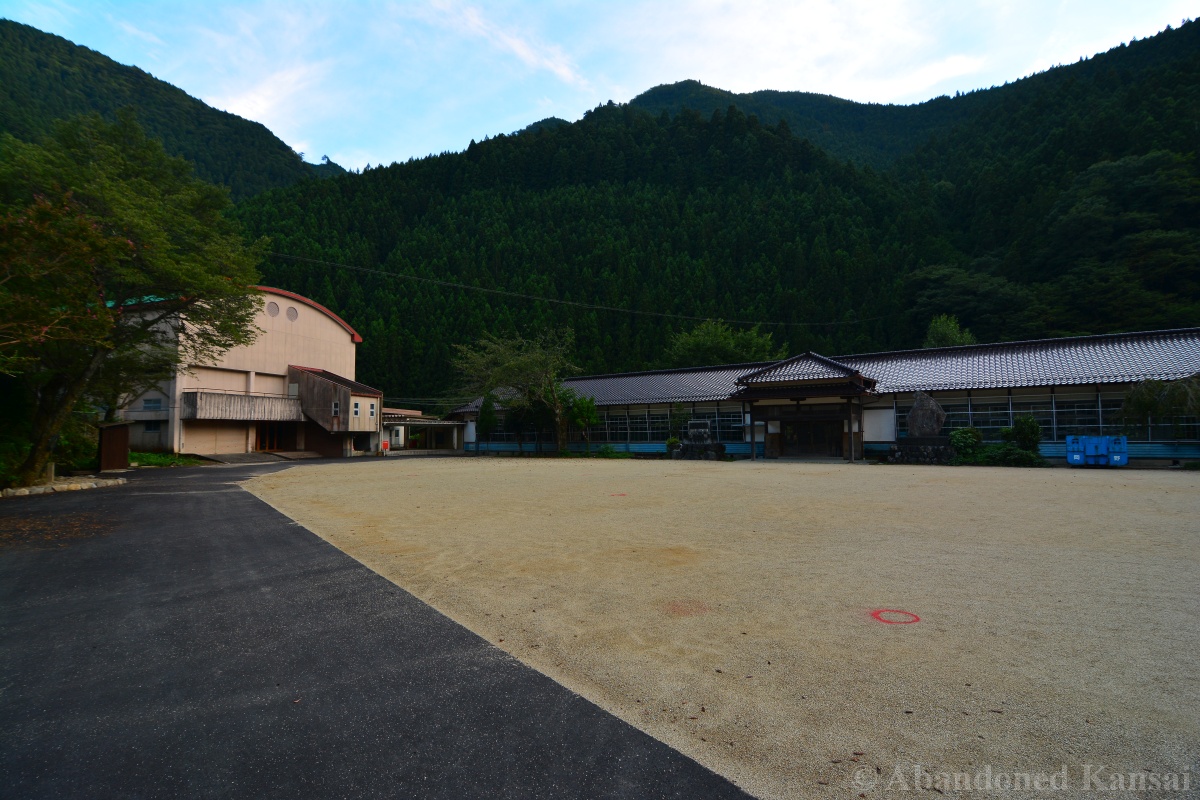This is my third and final article about the abandoned villas owned by Japanese real estate mogul Genshiro Kawamoto. I’m sure the place will continue to pop up regularly on the interwebs, but I’m done with it…
Not only am I done with the mansions after repeatedly documenting them between 2016 and 2020, my final visit in spring of 2023 actually made me question once more what I’m doing here with Abandoned Kansai.
After tremendously enjoying traveling domestically all over Japan during the pandemic, it was tough to experience how mass tourism (after opening the floodgates again in October of 2022) altered the perception of places… or even the way to work. (Fun fact: Japan didn’t have a hard lockdown, freedom of movement was never limited, because pretty much everybody started wearing masks for more than three years from February of 2020 on; including kids. Meanwhile people were dying like flies all over the world as some morons claimed wearing a mask would take their freedom… while it turned out that not wearing one would take their lives.) Me being a history buff, I always wanted to go Shimoda. Expecting a significant rise in overseas tourist again in the years to come I took a chance in spring of 2023 and finally went there. I had been to the Izu Peninsula before, but with no time to spare, so it was very nice to spend a relaxing day on the southern tip. I made some stops in other areas of Shizuoka on the way to Shimoda, but on the last day I originally planned to go straight back to Osaka. A night in Atami though reminded me of the *Kanemochi Mansions* and how much I enjoyed them in the past. It had been more than three years since my previous visit, so I spontaneously decided to add a night in Atami, visit the mansions in the morning and return on less crowded trains in the afternoon. (Well, I thought the trains would be less crowded in the afternoon… they were during the pandemic… but not anymore!)
Since I was on a recreational vacation and not on a creative one, I was not prepared for this exploration at all – I even had to look up the bus to the mansions. Even worse: I didn’t bring my tripod as I only expected to take some daylight snapshots for family and friends back home of the place where Commander Matthew Perry (not the Friends guy!) “opened” Japan in the 19th century. Arriving at the Kanemochi Mansions in Atami (not Shimoda!) I was surprised by how much overgrown everything was… except for the now quite beaten path leading up to the main mansion; damaged furniture by the roadside where the short trail started. My excitement was instantly replaced by a queasy feeling. It had become rather quiet about the most famous abandoned villas in Japan over the last three years, hardly any photo, next to no articles (at least not in my social media sphere…). Word on the street was that Kawamoto (or at least his company) took control over the mansions again, installing security systems… which couldn’t have been further from the truth.
Just a few meters after the damaged desk, barely past the trampled barbed wire fence, I saw the first toppled and broken statue. The glass front of the villa, facing the pond, had some graffiti on, the windows on the second floor were completely gone. Access to the building had become gradually easier in the past, now I was able to just walk in as the massive glass pane facing the waterfront was partly smashed, too. And that was just the beginning…
To make a not so long story even shorter: The villa had been ransacked. I guess about half of the interior had been stolen (including a large paining and the Nautilus II toilet!), the other half had been vandalized in one form or another. People always commented on Kawamoto’s questionable level of taste, but at least there was some consistency and weird charm to the mansion. Now the building was just another couple of graffitied walls with broken stuff scattered around – Western urbex. But so much for “there is no vandalism in Japan”, which I already knew wasn’t true, but now you have photographic proof with some comparison photos at the end of the gallery. Not good comparison photos, because like I said, my final visit lacked preparation and equipment, but you’ll get an idea. Another “Japan is so superior in every regard” myth debunked…
The mix of fond memories, security rumors, and the disgusting amount of vandalism made this one of the worst urbex experience in my more than 13 years of enjoying this hobby. I basically only did a quick walkthrough, taking some snapshots here and there, leaving as fast as possible… to check out the second villa with the open space bedroom / office and the beautiful upper floor.
Same situation there – smashed mirrors, missing interior, massive glass front broken. BTW: We are not talking regular window glass here… that stuff was like 1.5-cm-/0.6-inch-thick glass, maybe more, probably some kind of security glass. We are still talking about the villa of a billionaire after all – not every schmock with a rock was supposed to gain access!
The thing is: For four years I absolutely loved the *billionaire’s villas*. Every trip there was exciting, I had the feeling that I found a very special place, easily in my personal Top 5; which isn’t easy considering that I logged more than 1000 explorations. Was it tough to keep the mansions a secret? YES, because if you take photos like that, you want to show them around – and NO, because I explore mainly for myself and I’m not the slightest interested in exposing abandoned places… I prefer to revisit them, which I actually barely ever do.
But then some idiots selfishly dragged the villas into the public eye to make Google (which owns Youtube) a fortune and to pick up some crumbs themselves. Other lowlifes quickly jumped onto the attention-whoring bandwagon and doxed the place – vandals did the rest. For four years I genuinely enjoyed this location every time I stopped by. Now this has been taken from me and the handful of other serious explorers. Can secrecy like ours stop places from getting vandalized? Obviously not, as long as there are careless assholes out there – but that doesn’t mean that we should contribute to that. Just because more and more people act like entitled trolls on the internet doesn’t mean that the remaining individuals can change that bad behavior – but this also doesn’t mean that they should pile onto the word vomit. Just be a decent person online and offline. And please don’t support large channels / groups / social media accounts with the focus on urban exploration – they are killing the hobby! If not actively, then at least indirectly… 😦
(*Like Abandoned Kansai on Facebook* or *follow us on Twitter* if you don’t want to miss the latest articles and exclusive content – and subscribe to the *video channel on Youtube* to receive a message right after a new video is online…)
Read Full Post »






